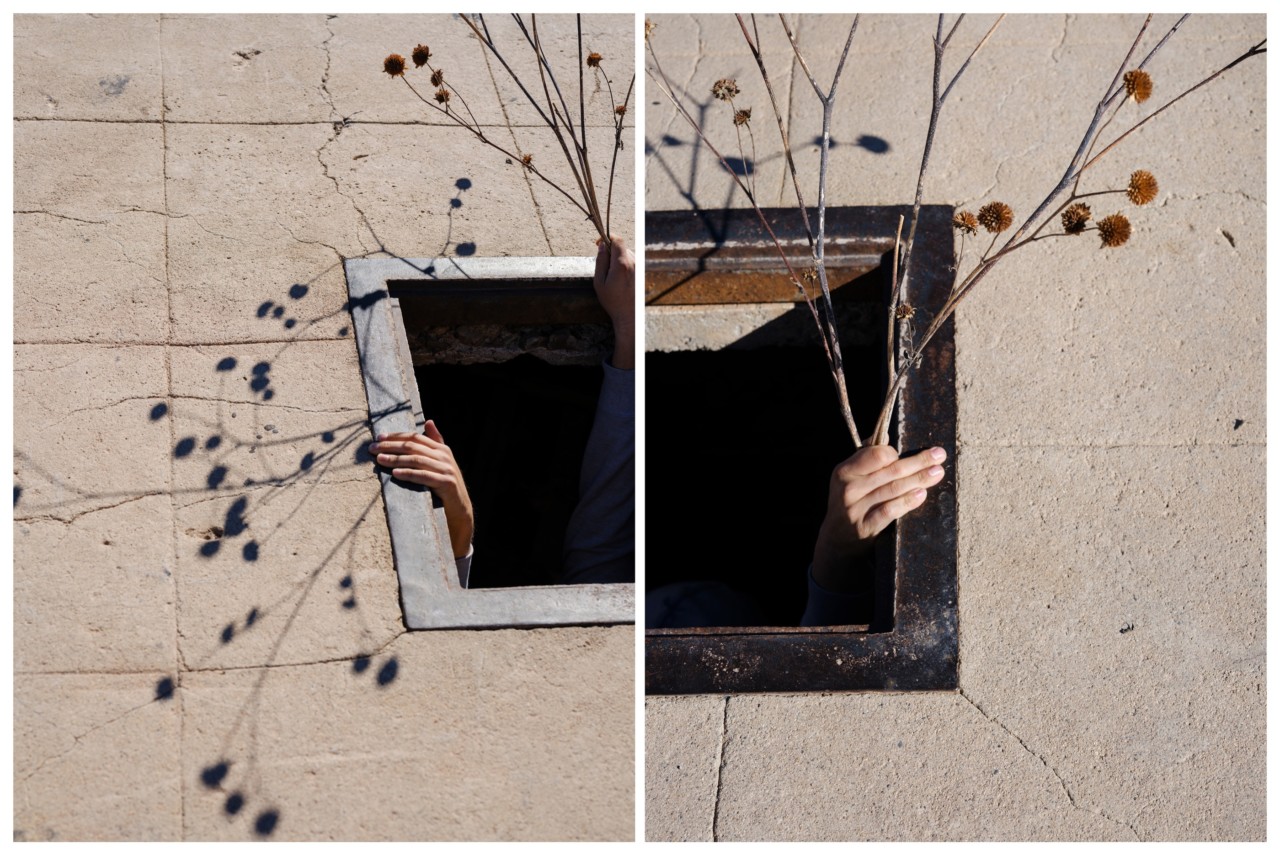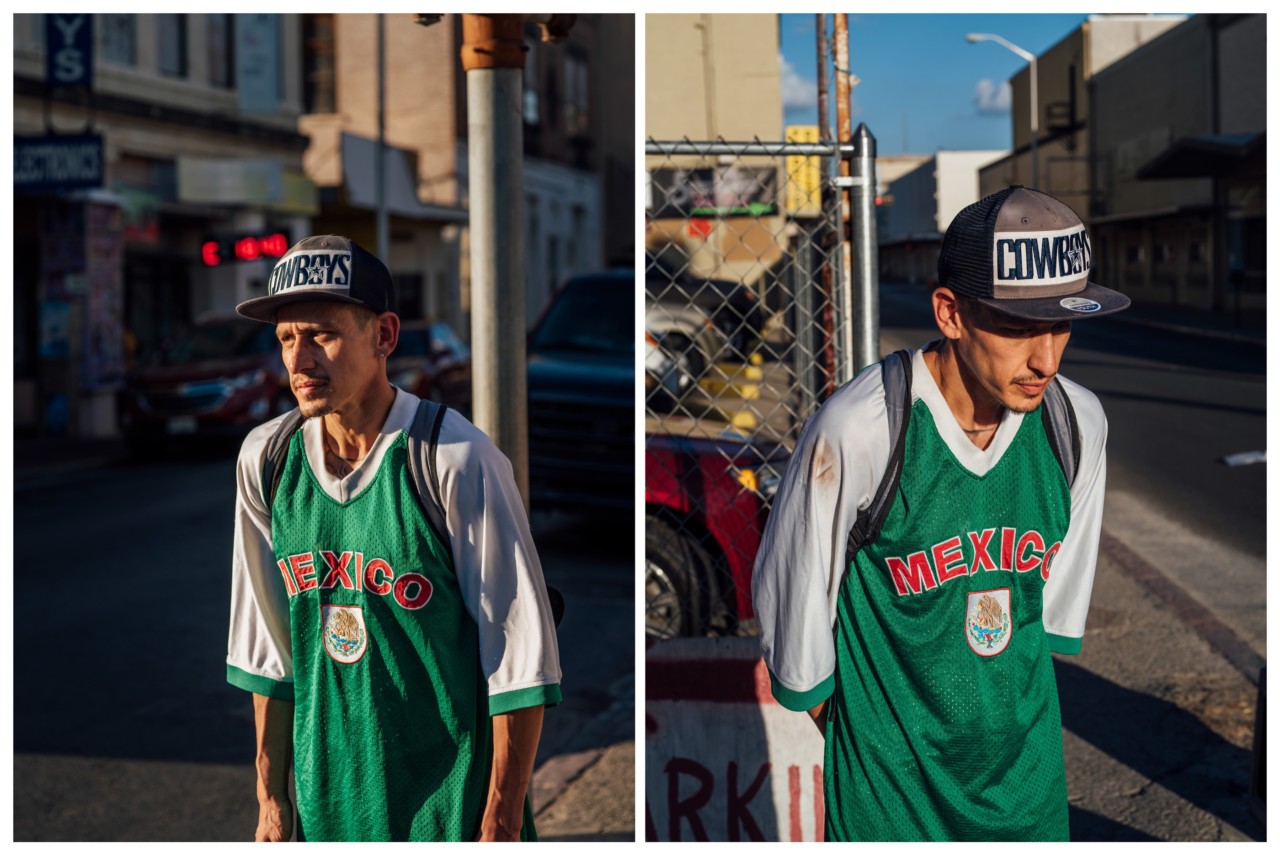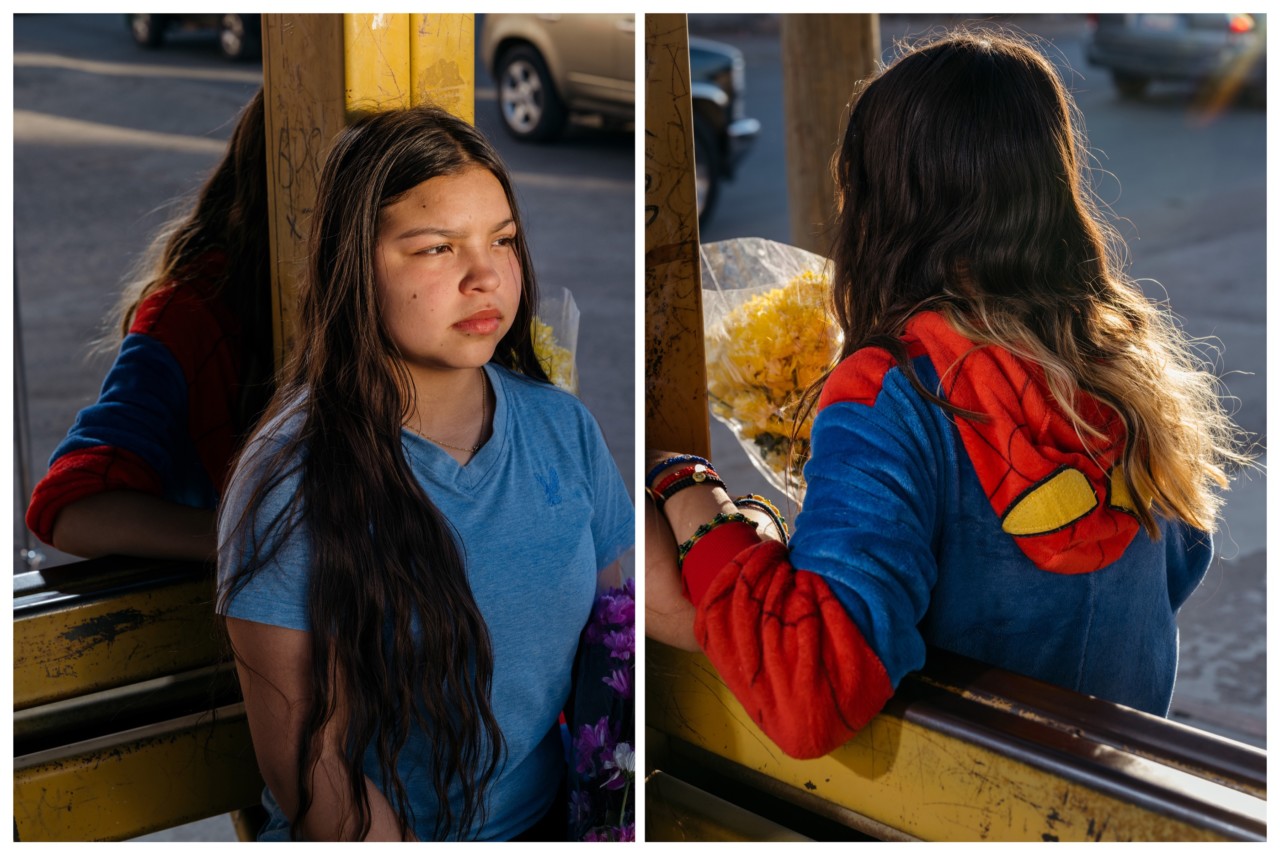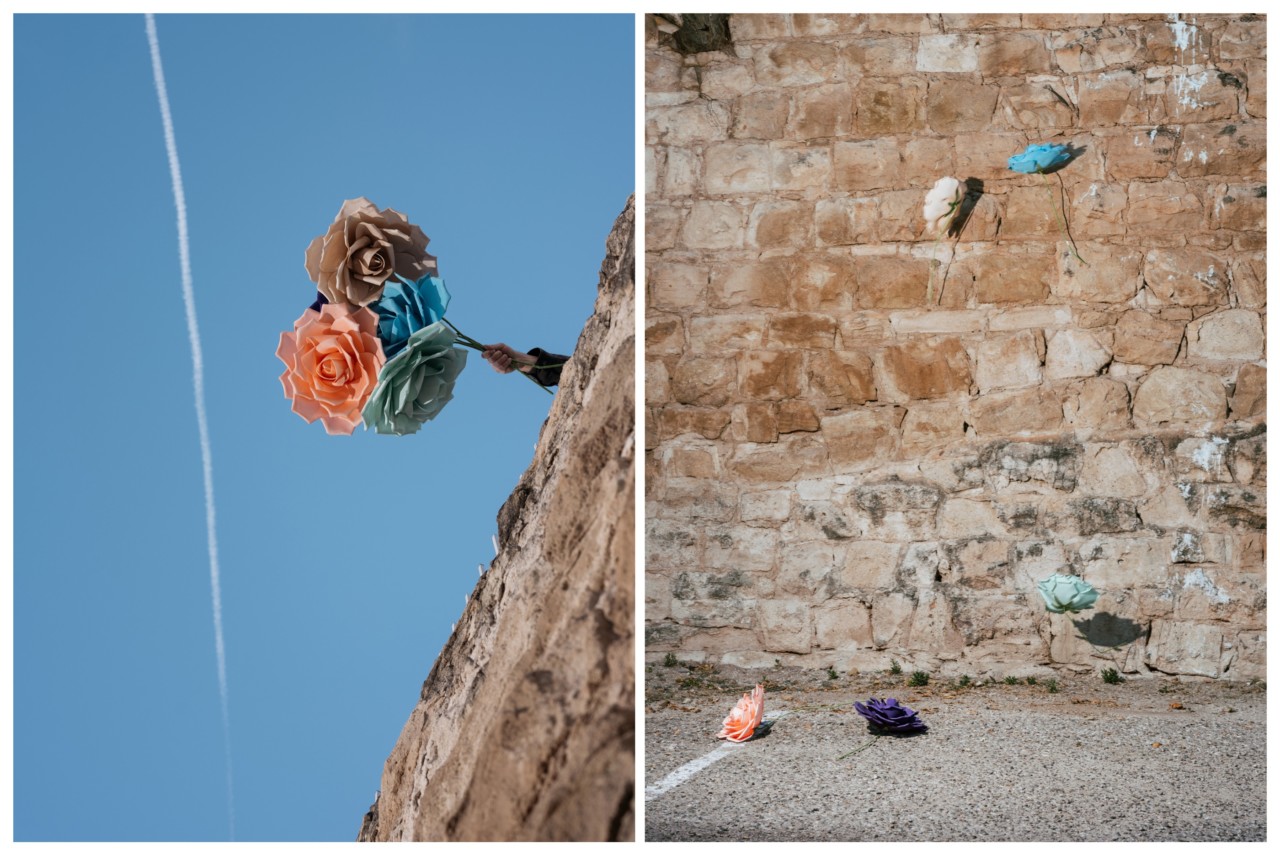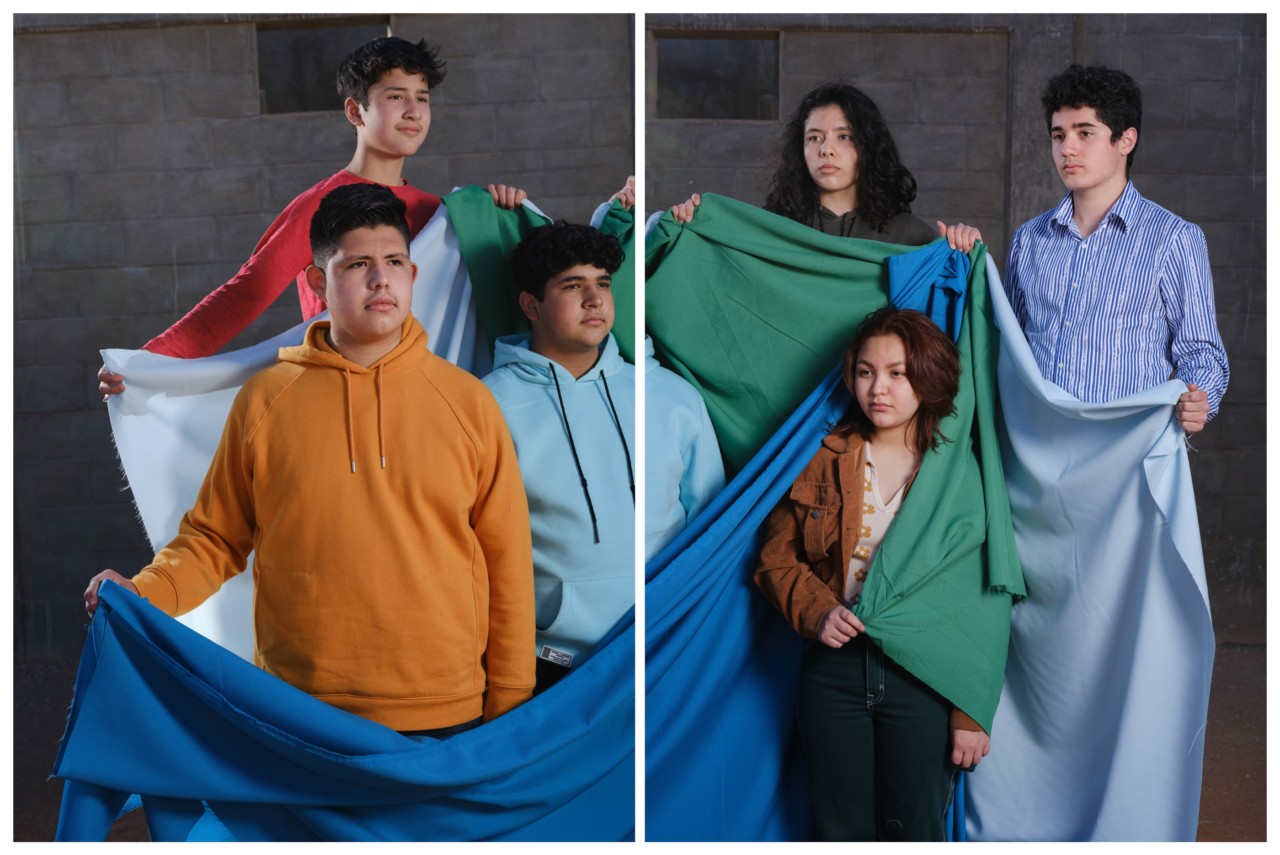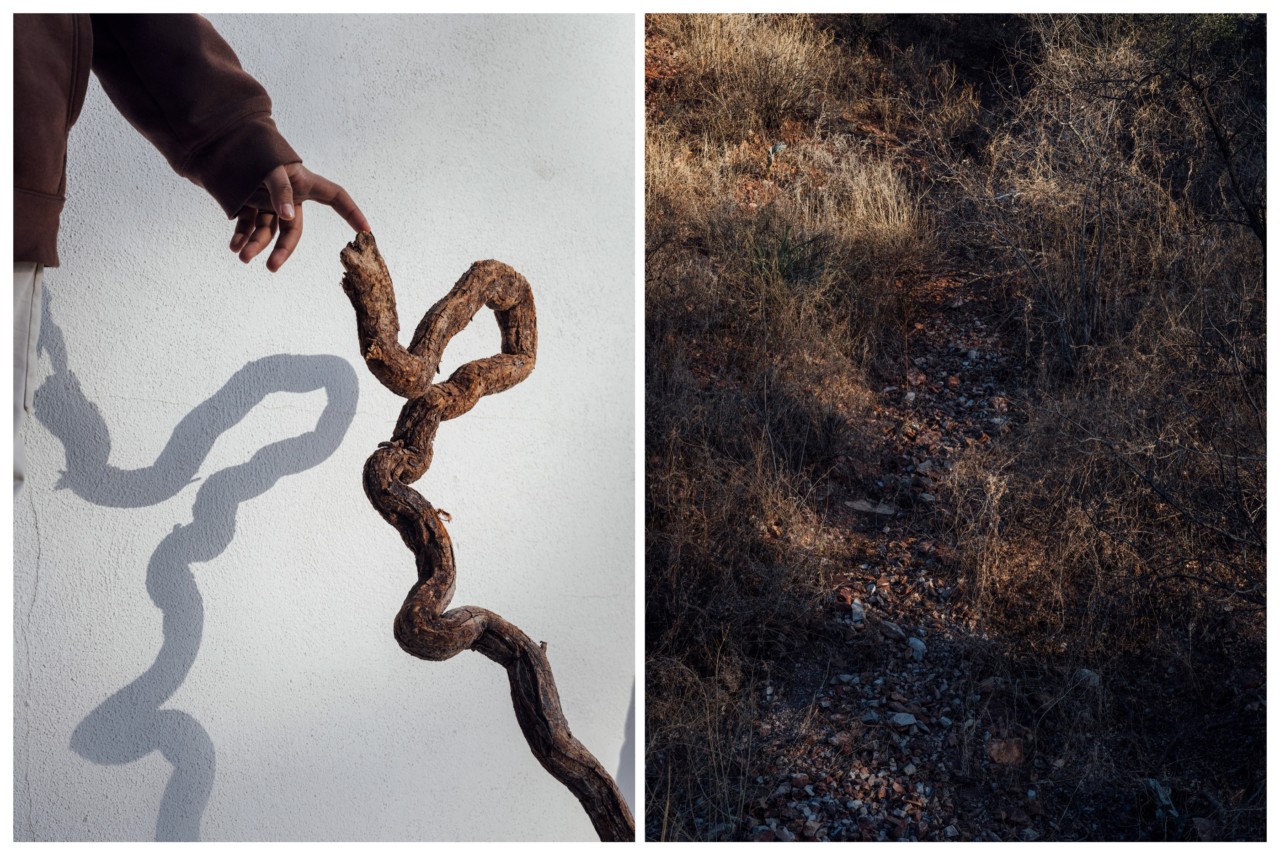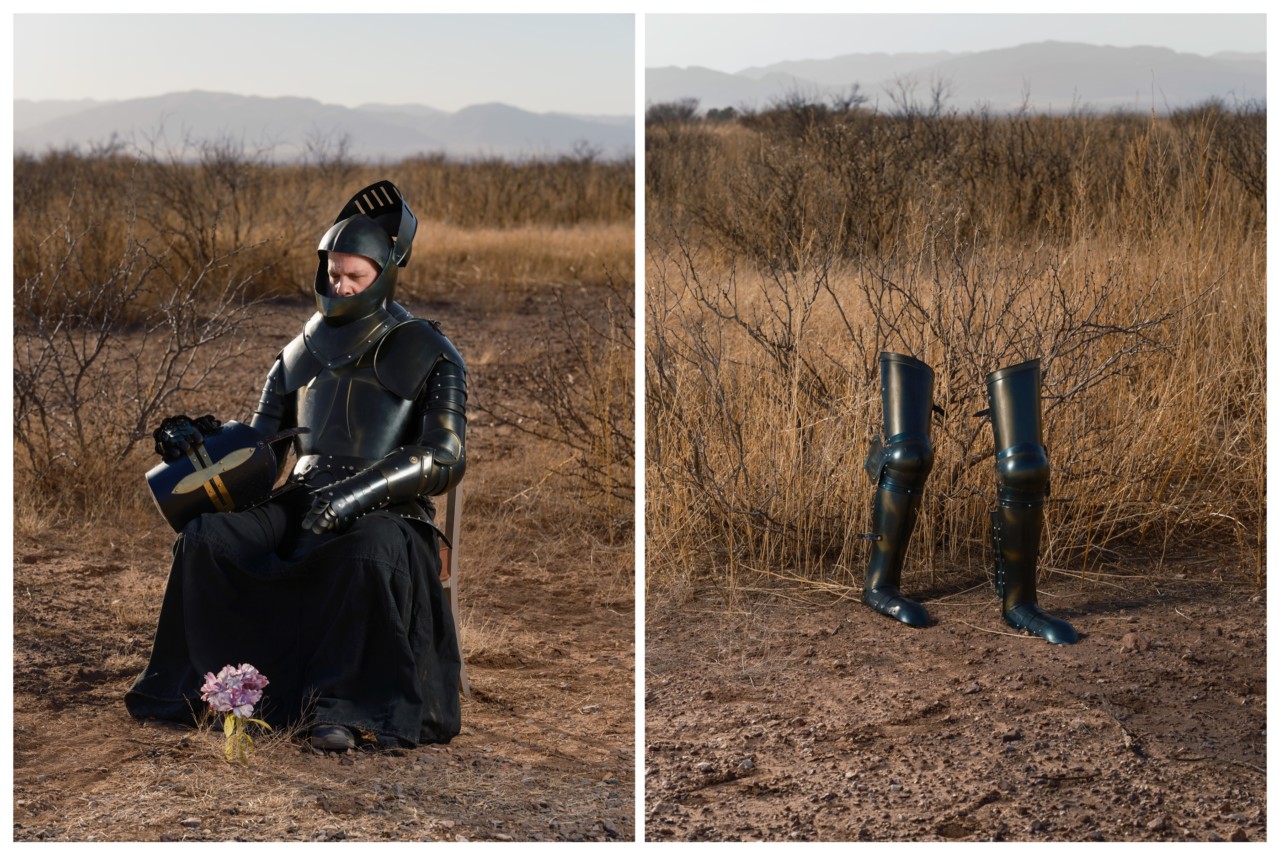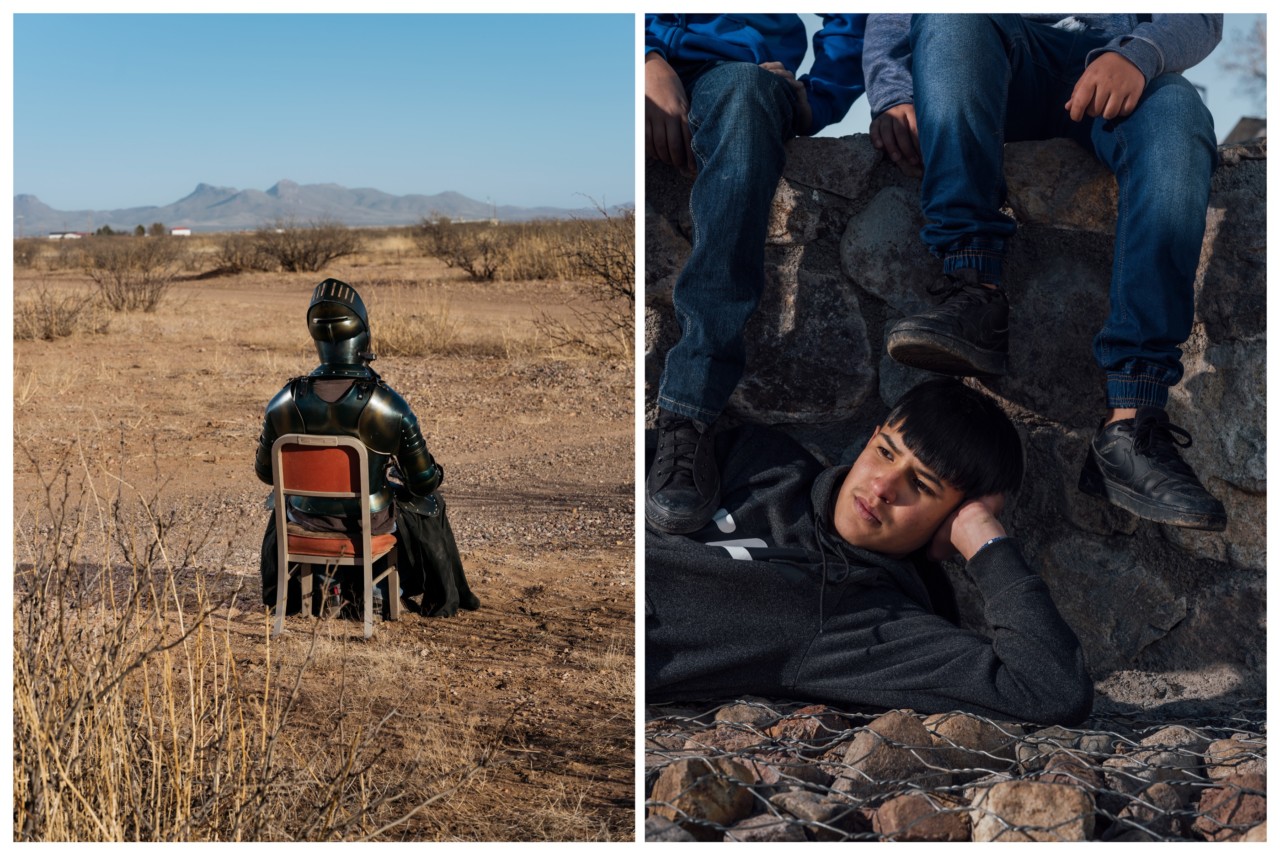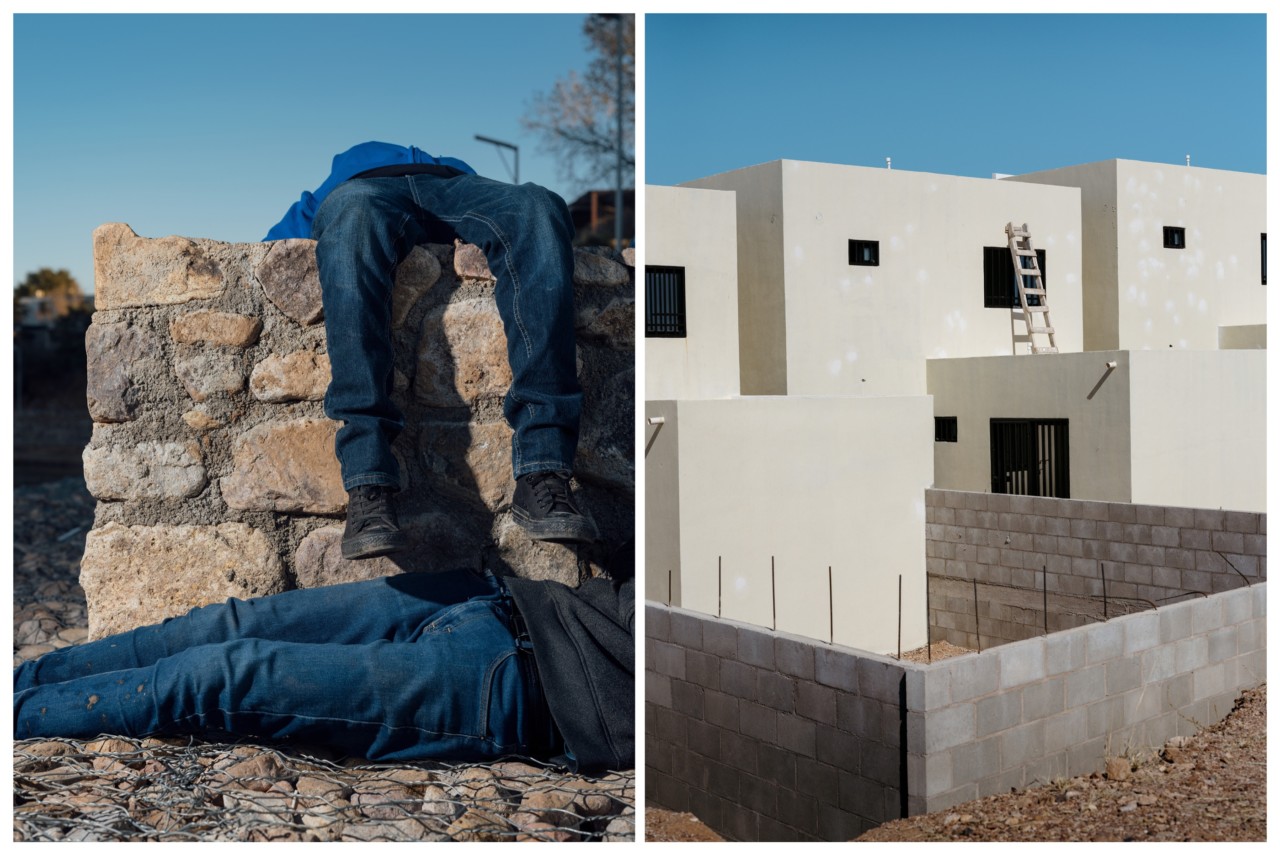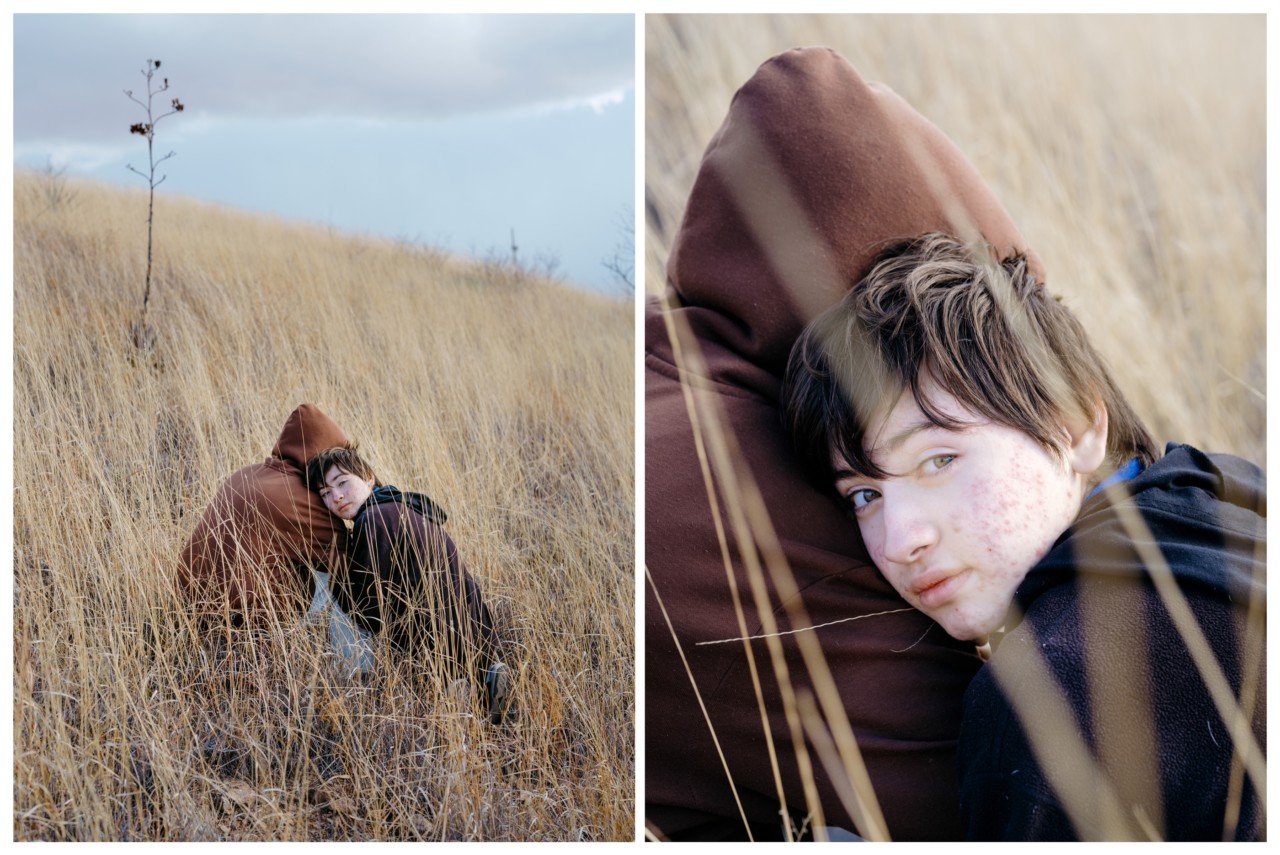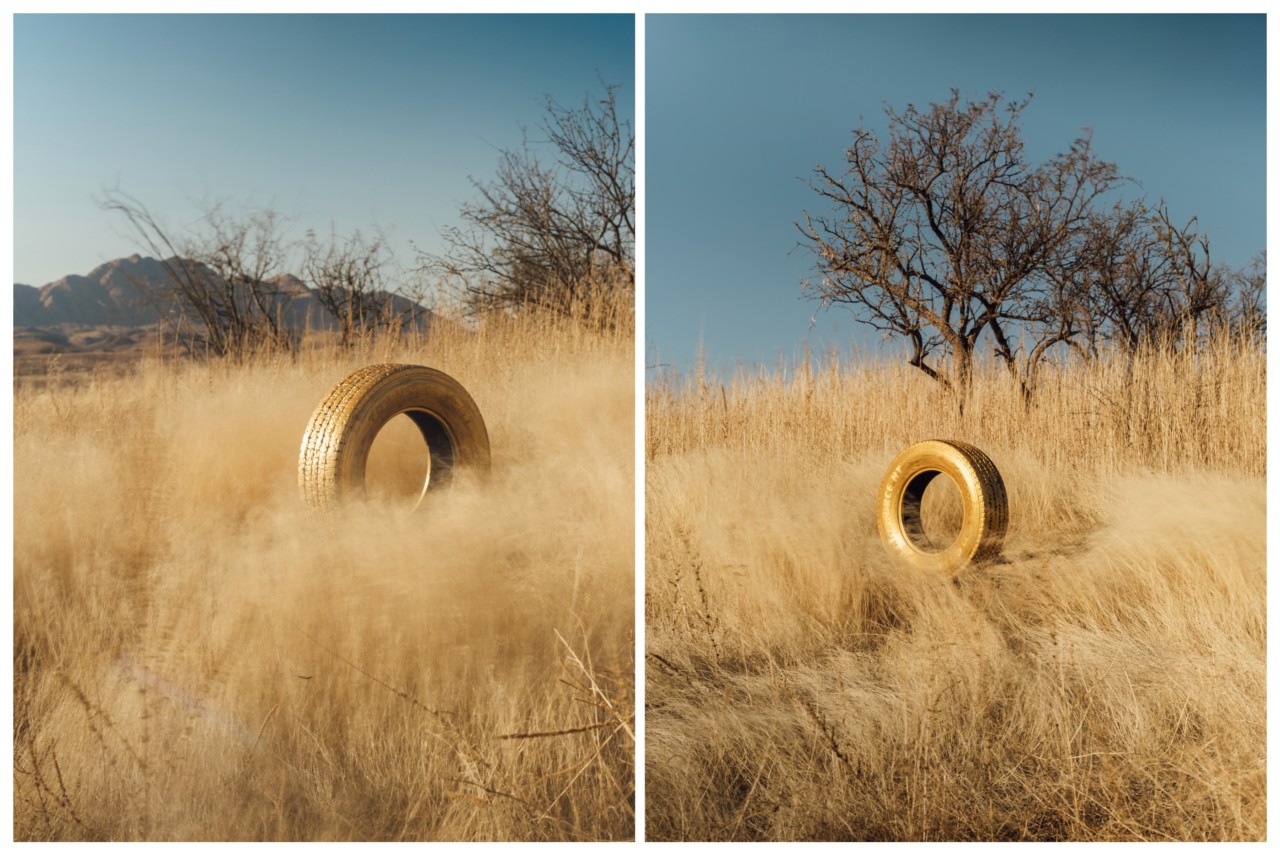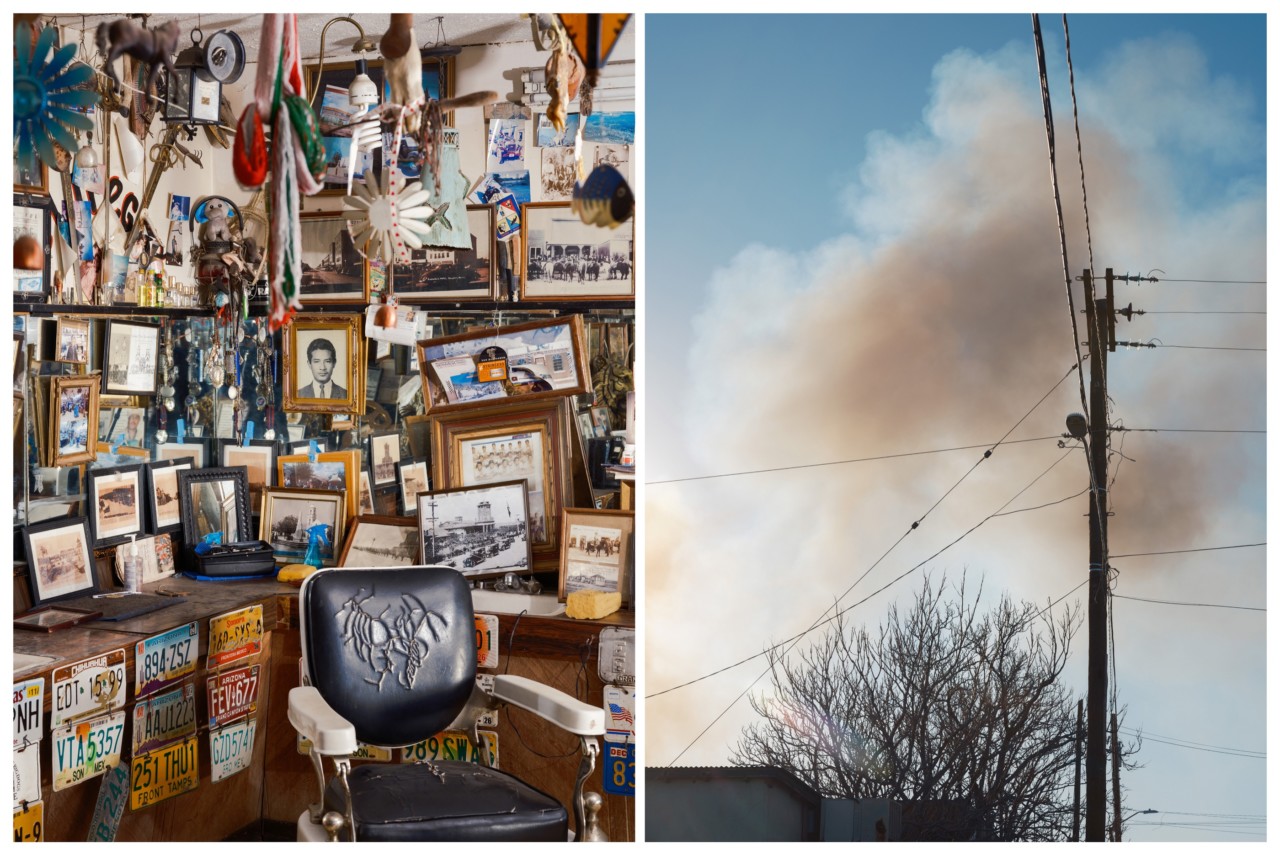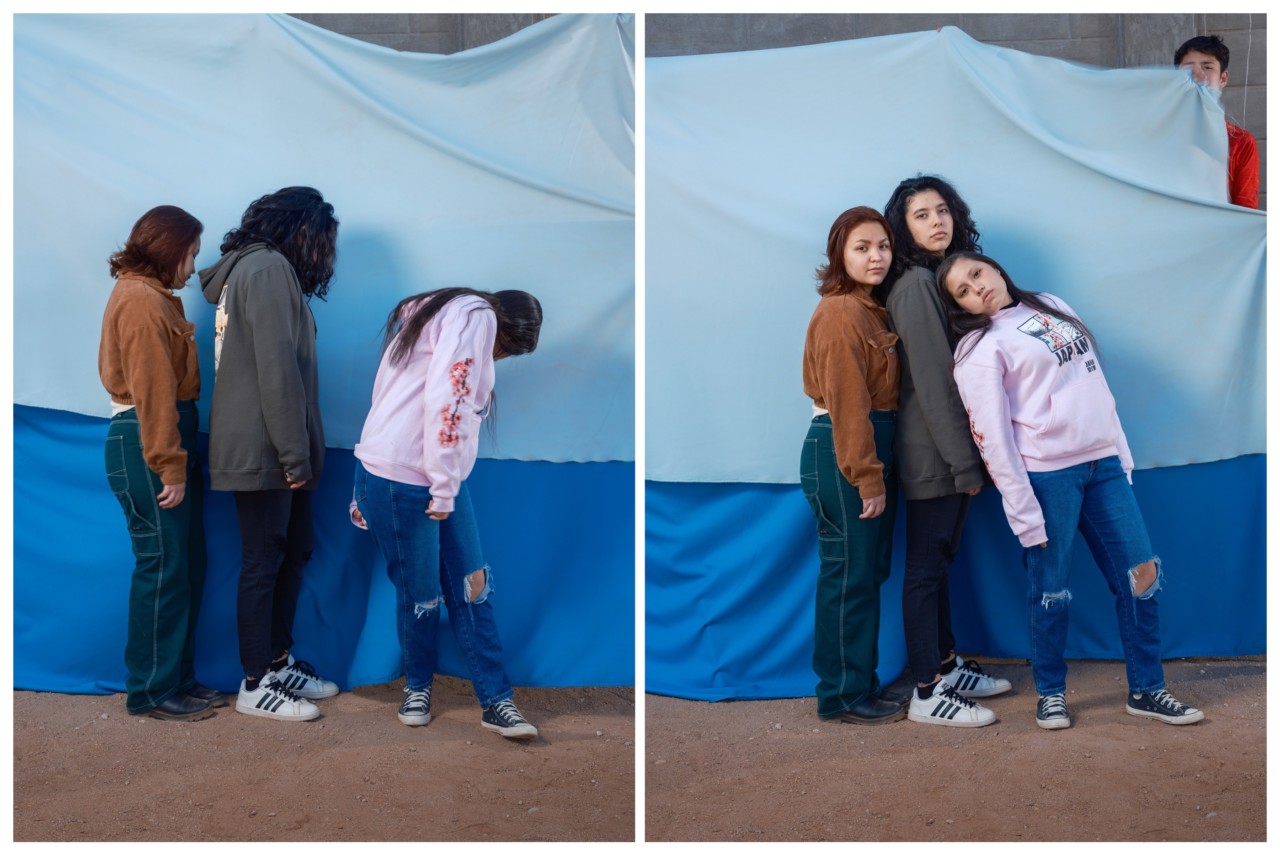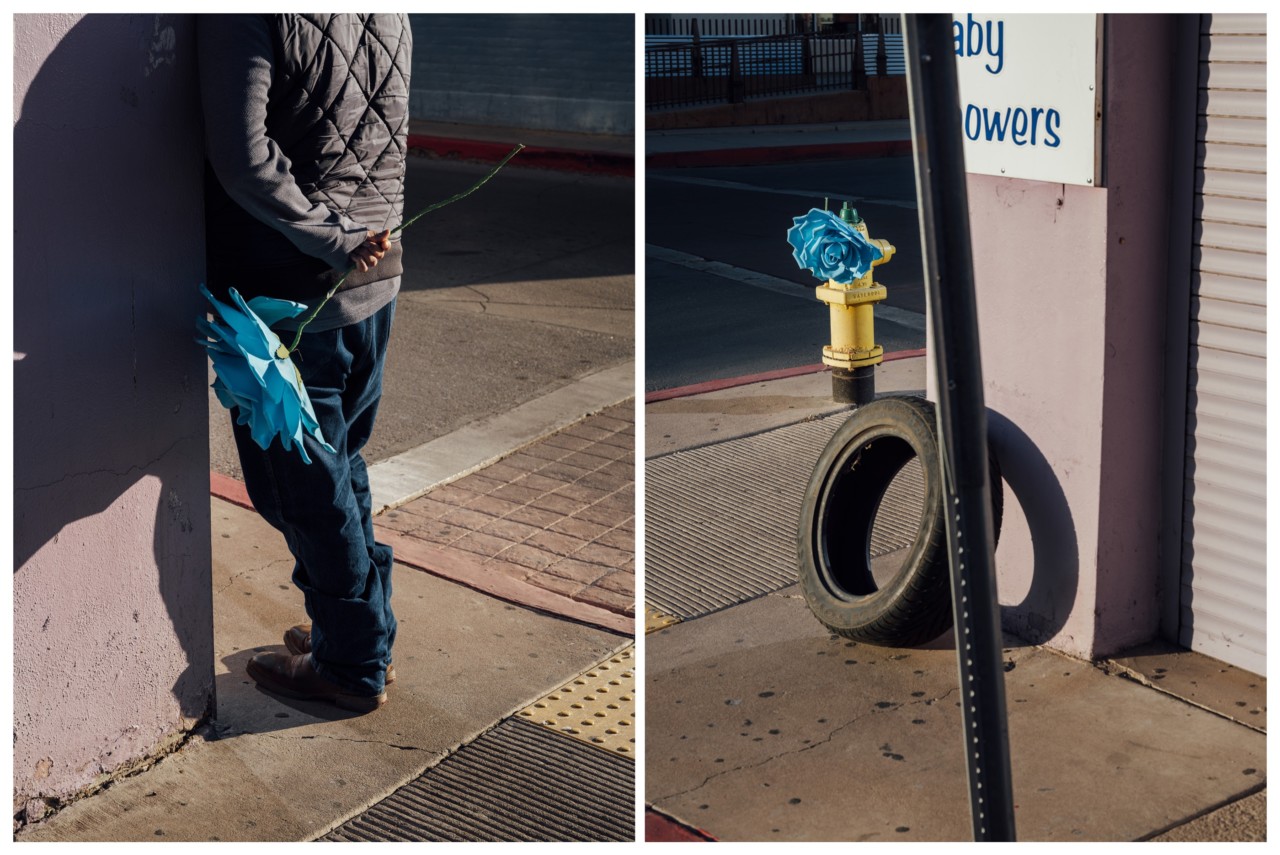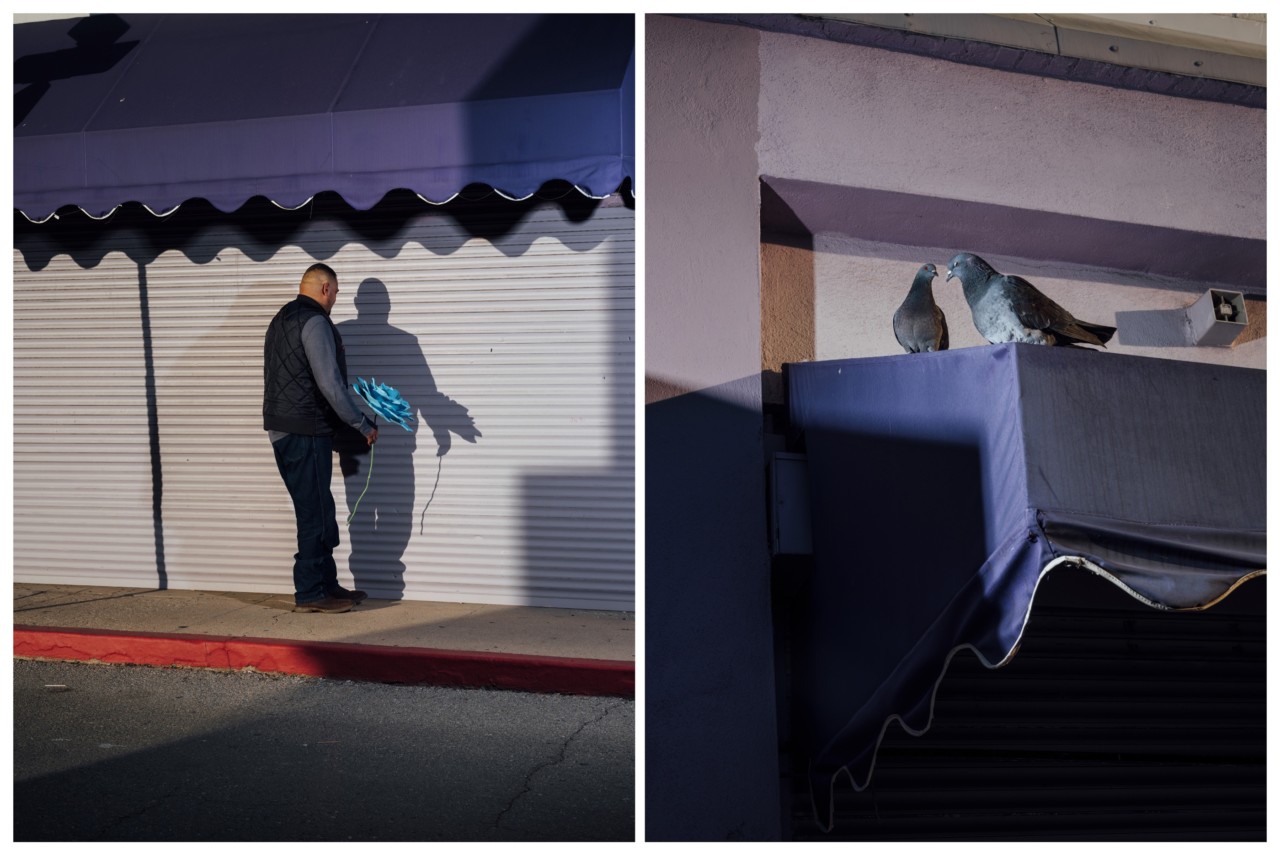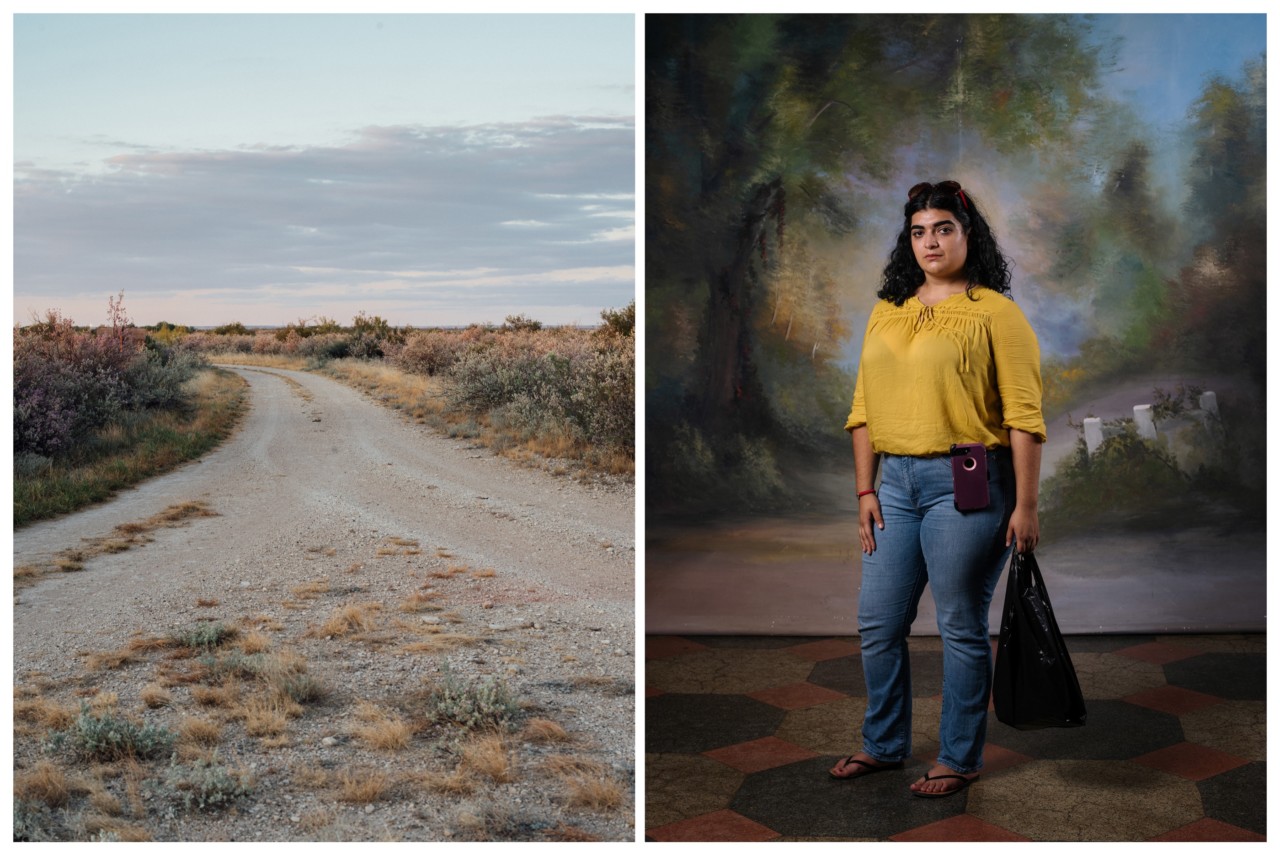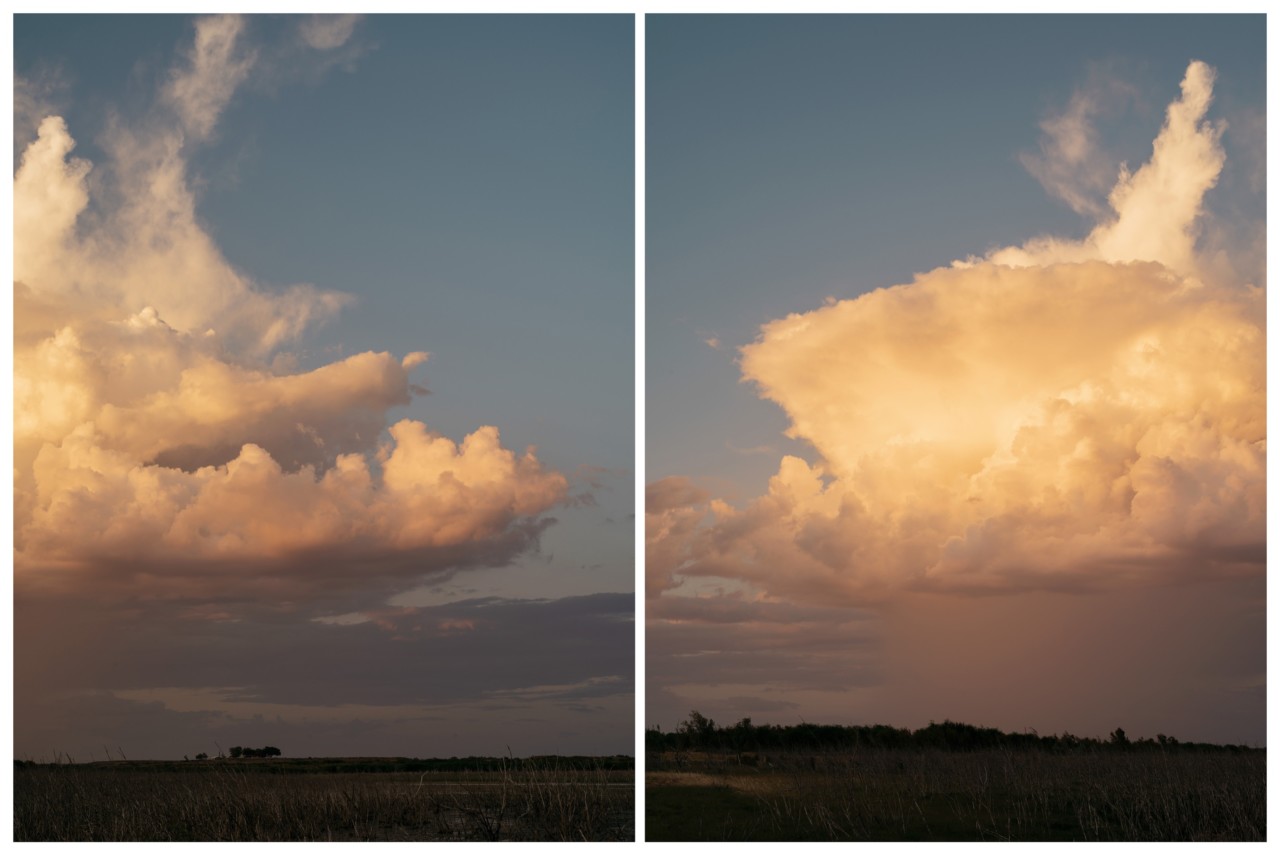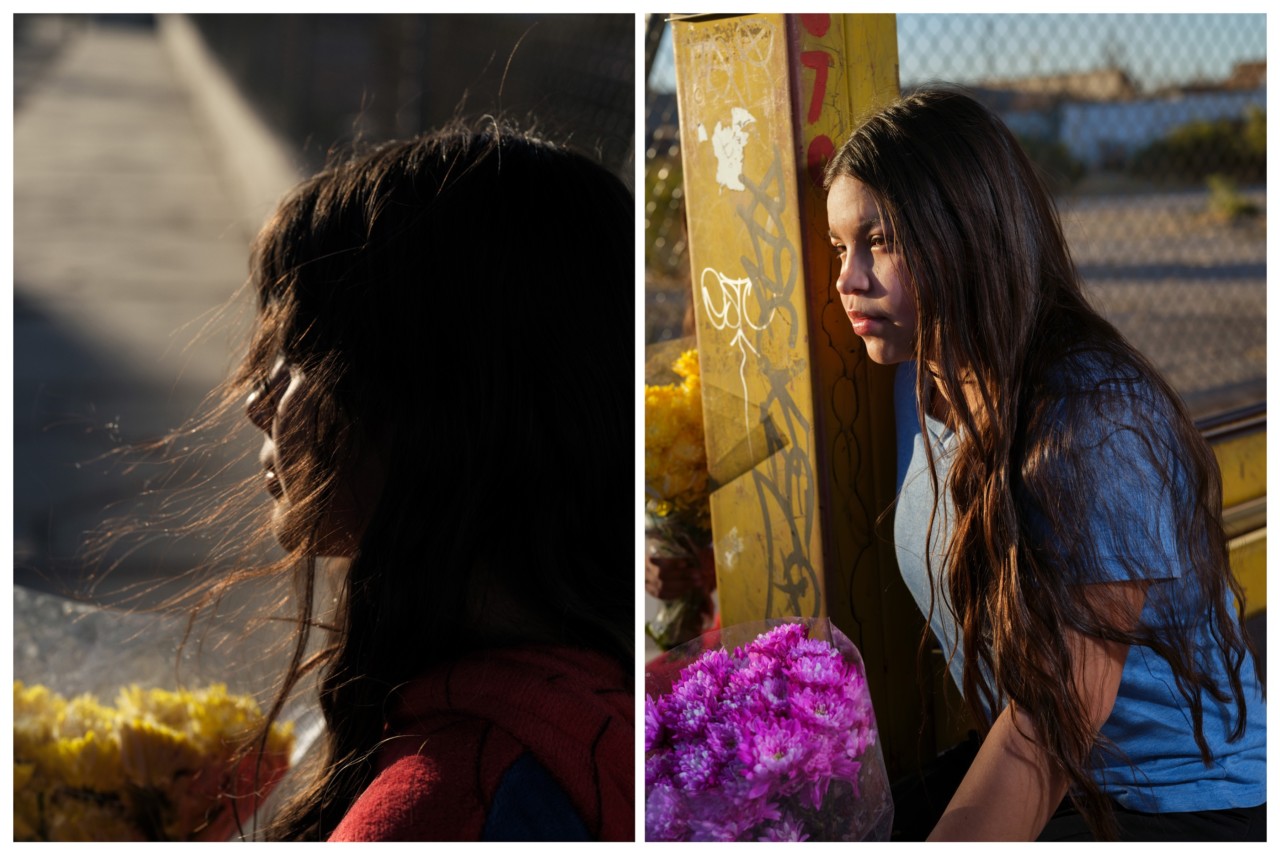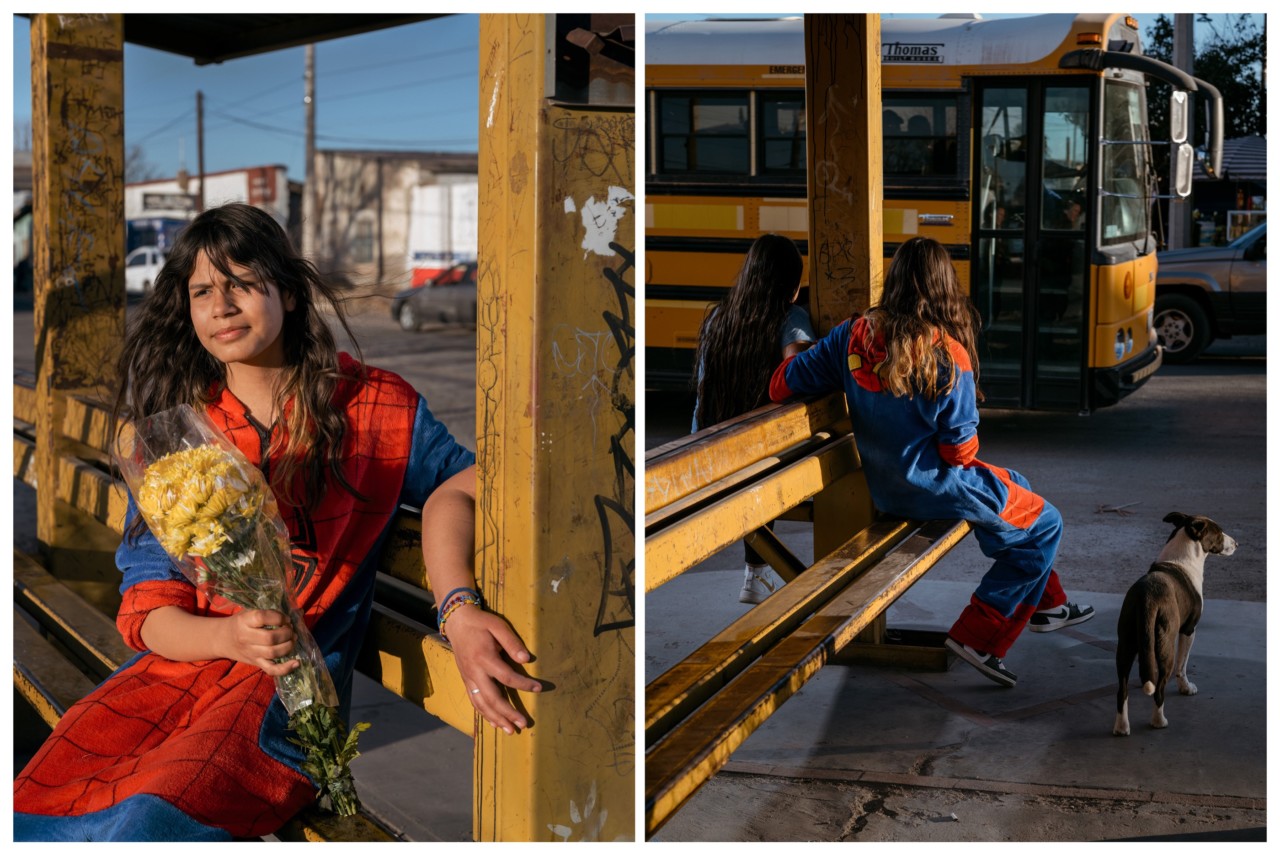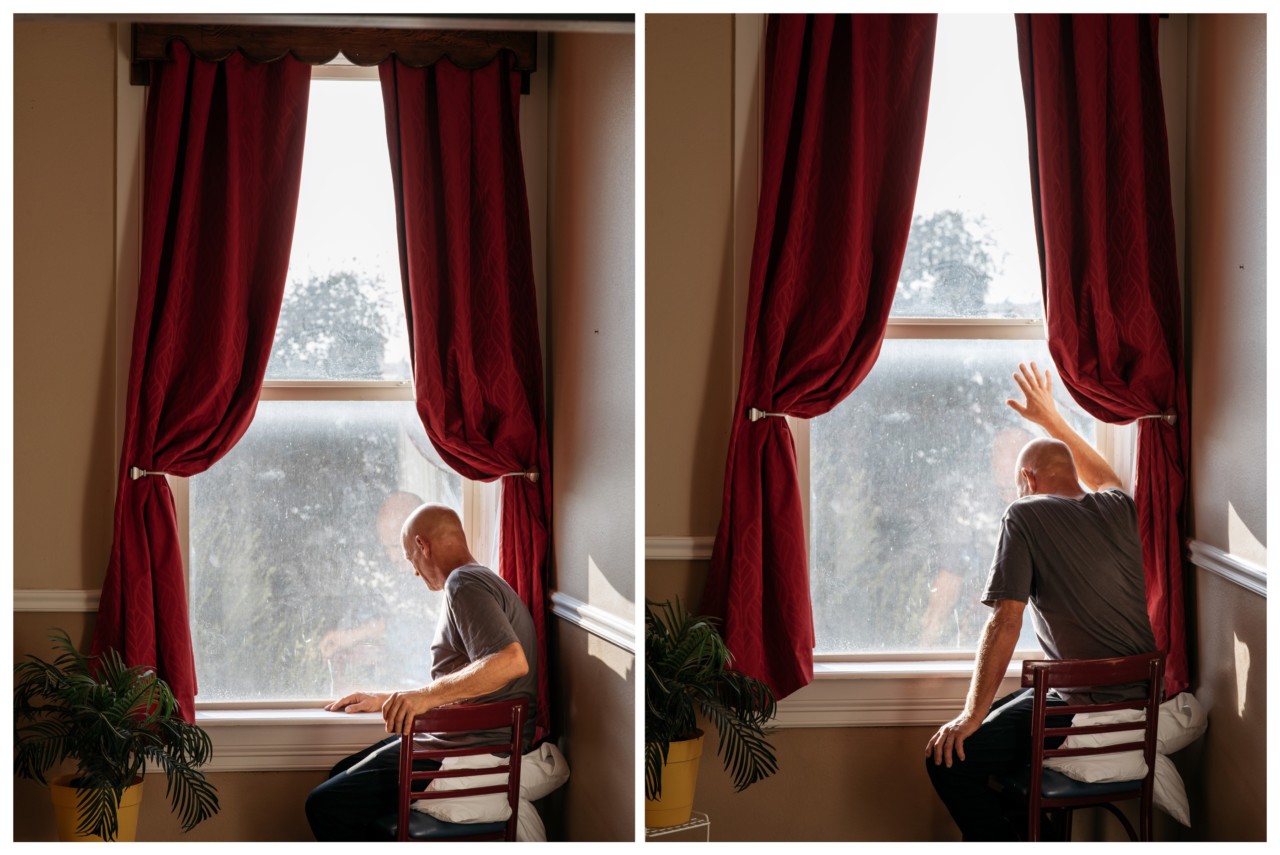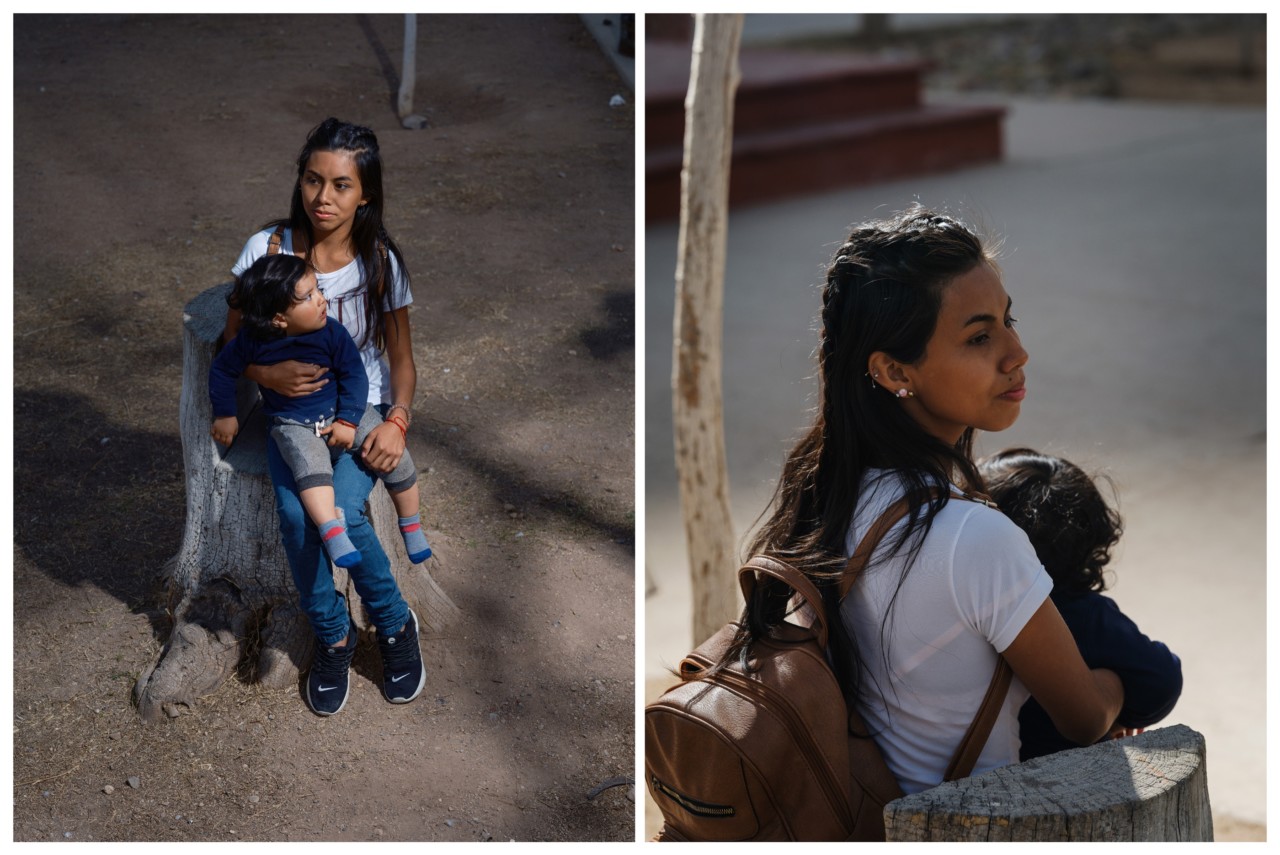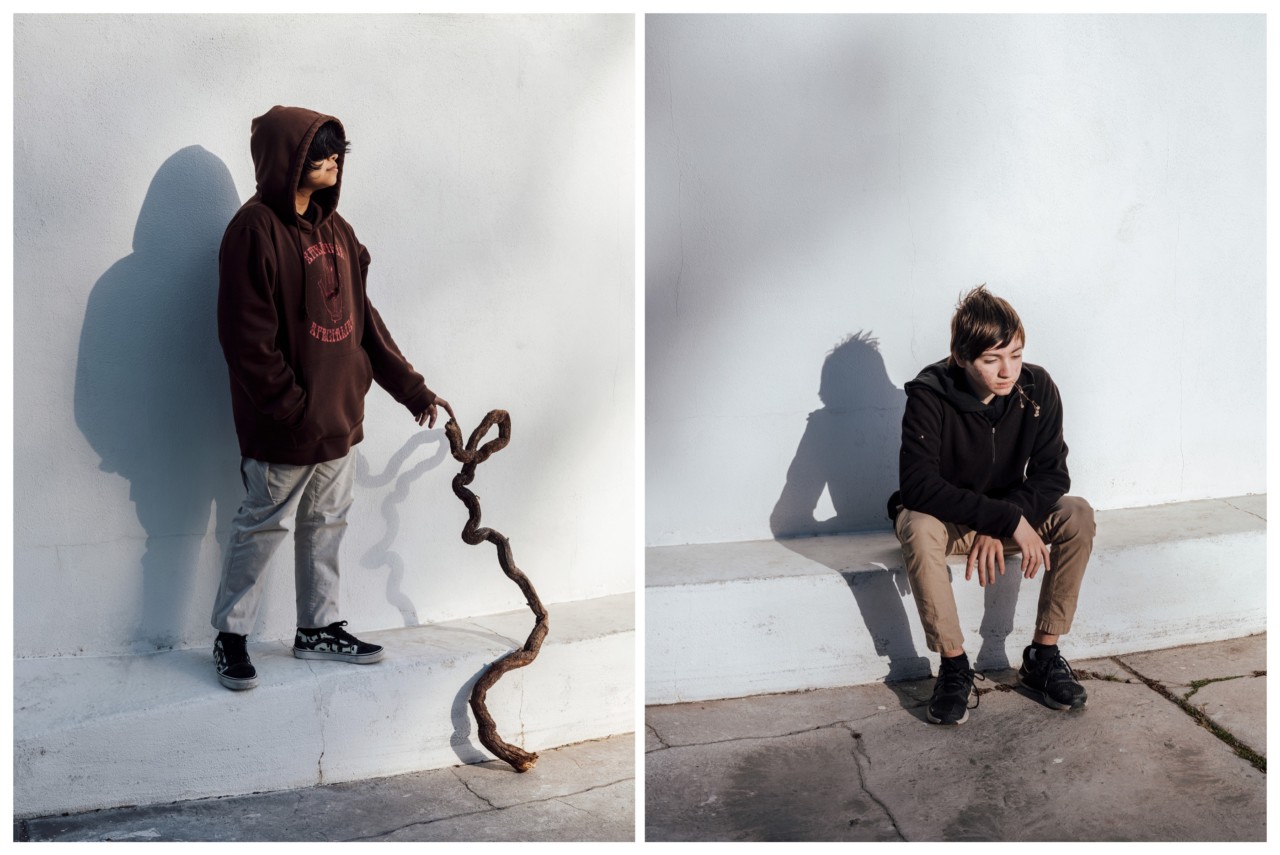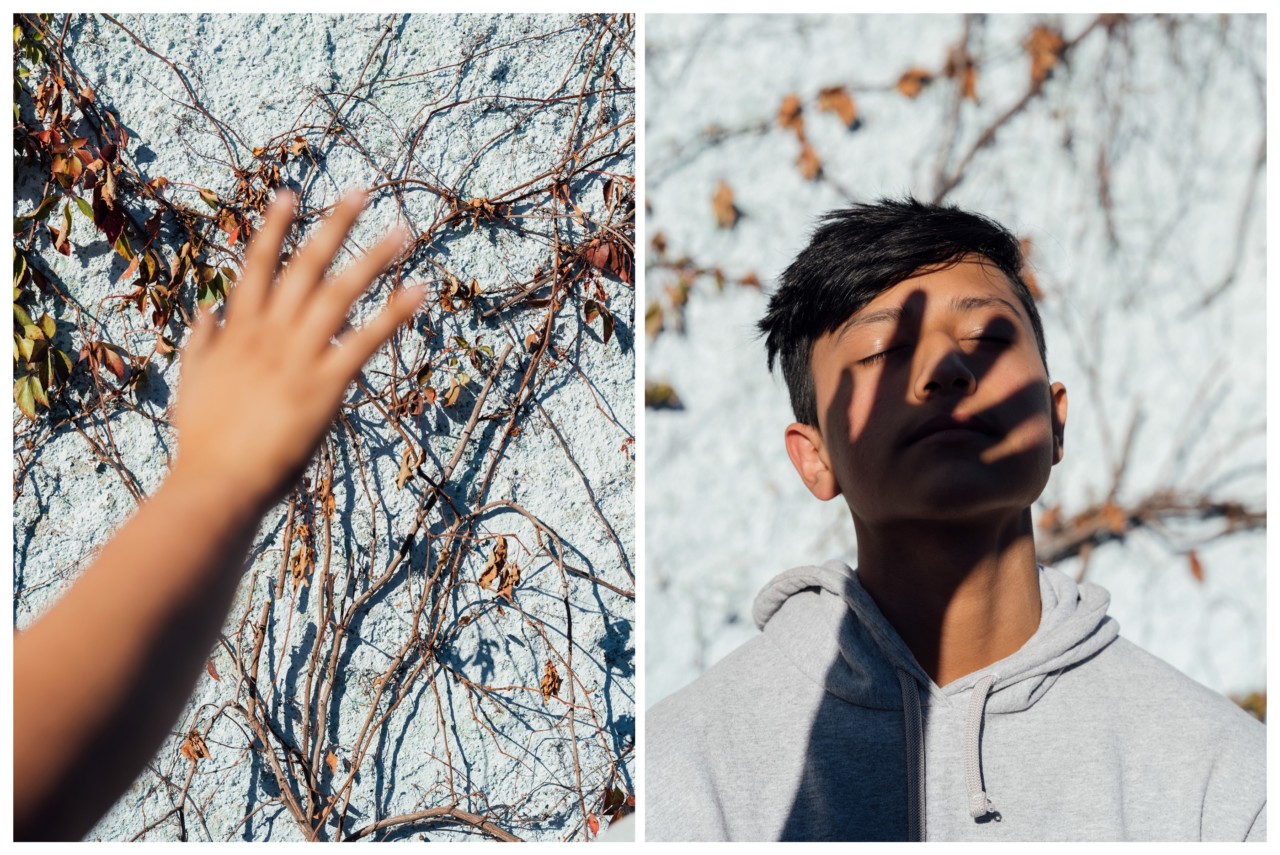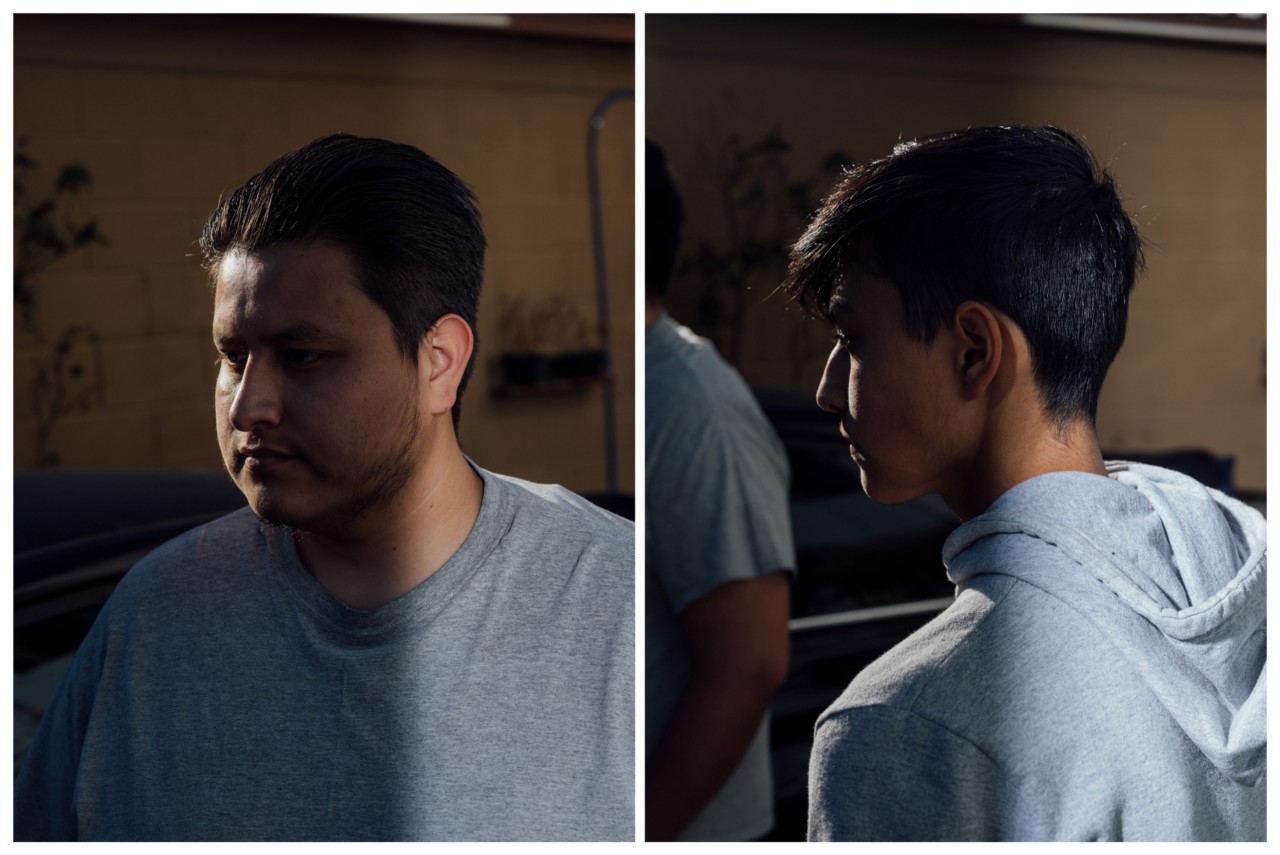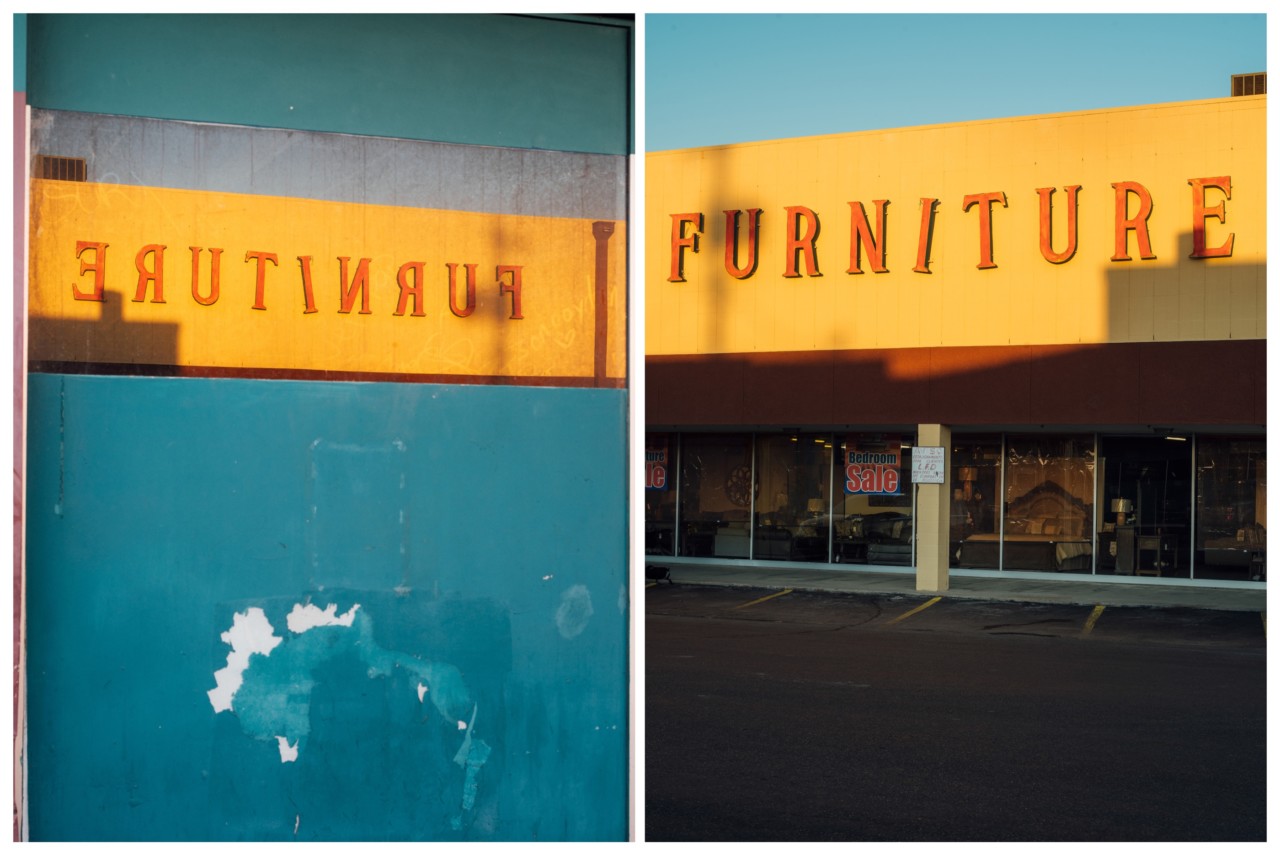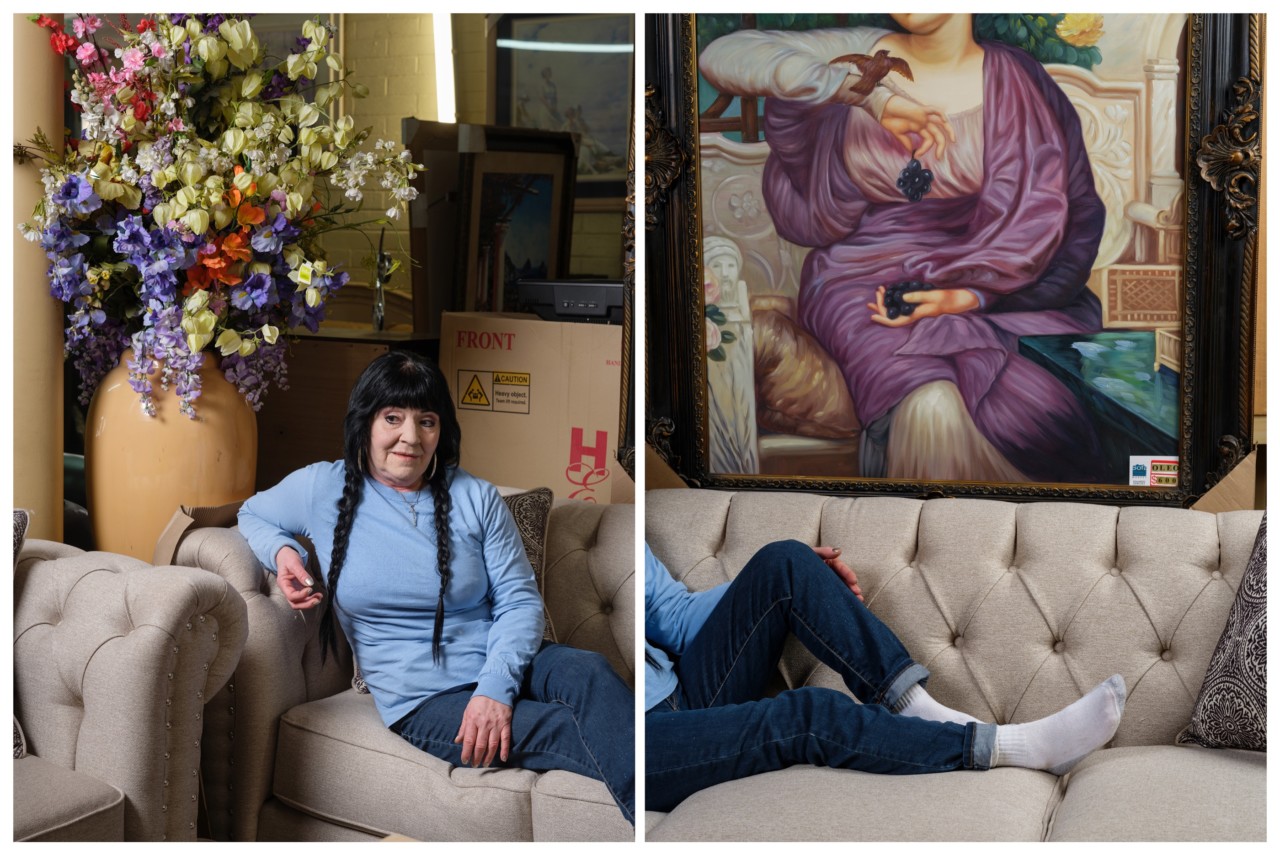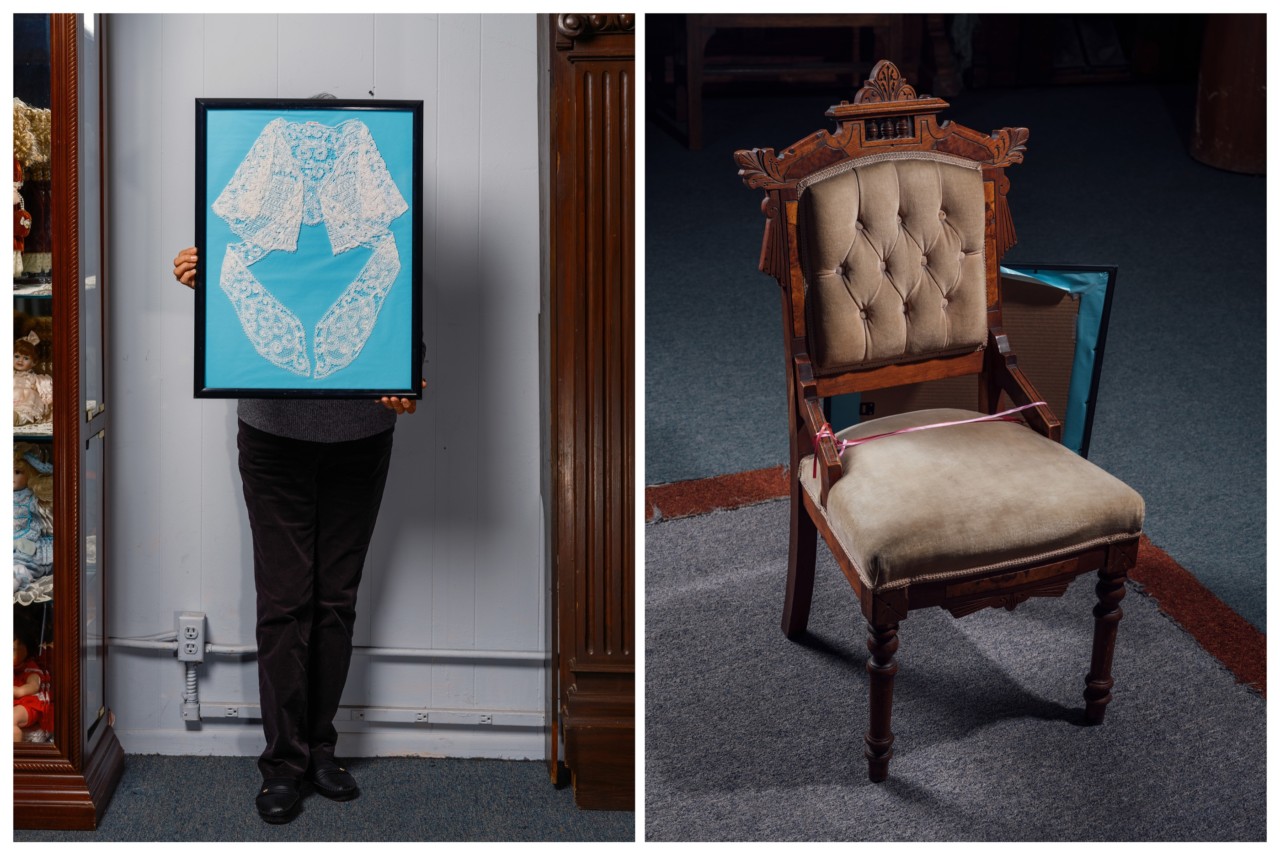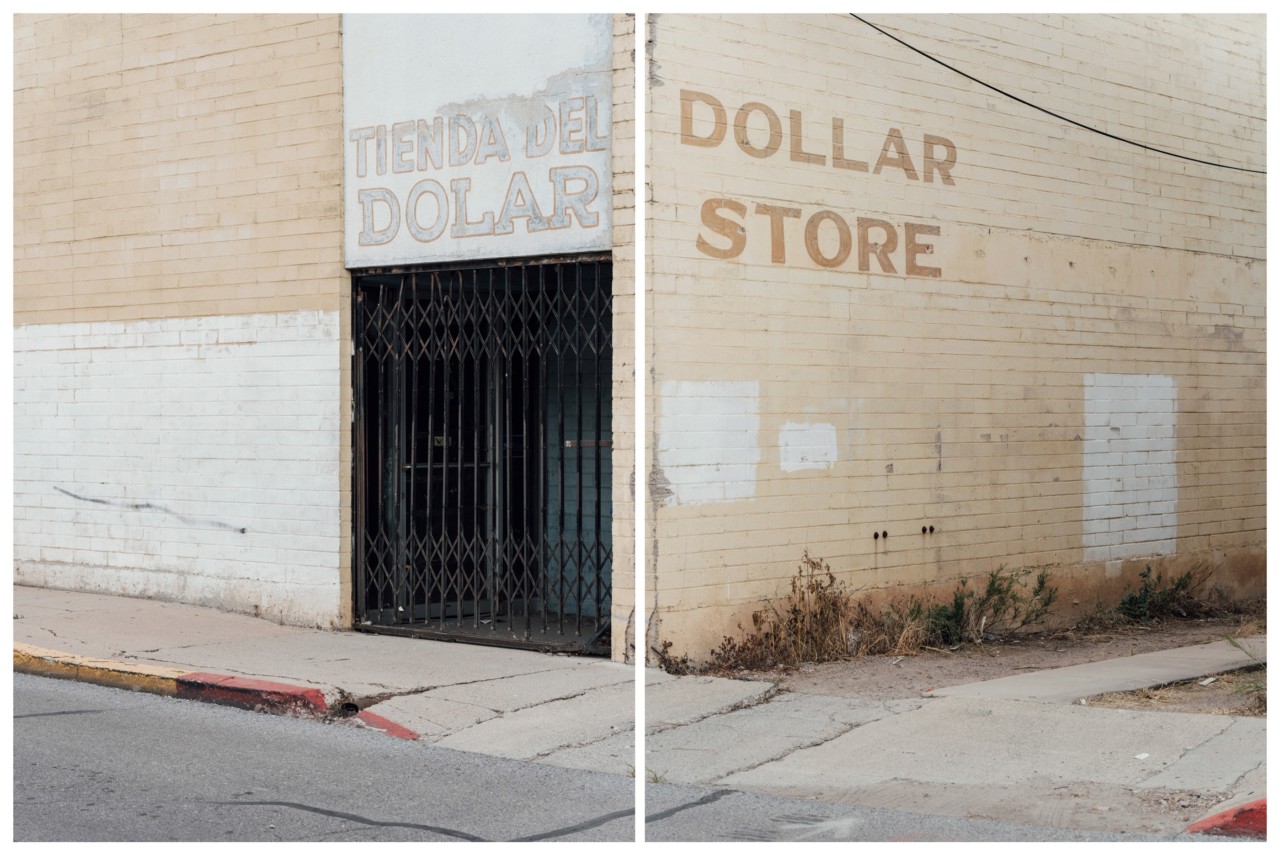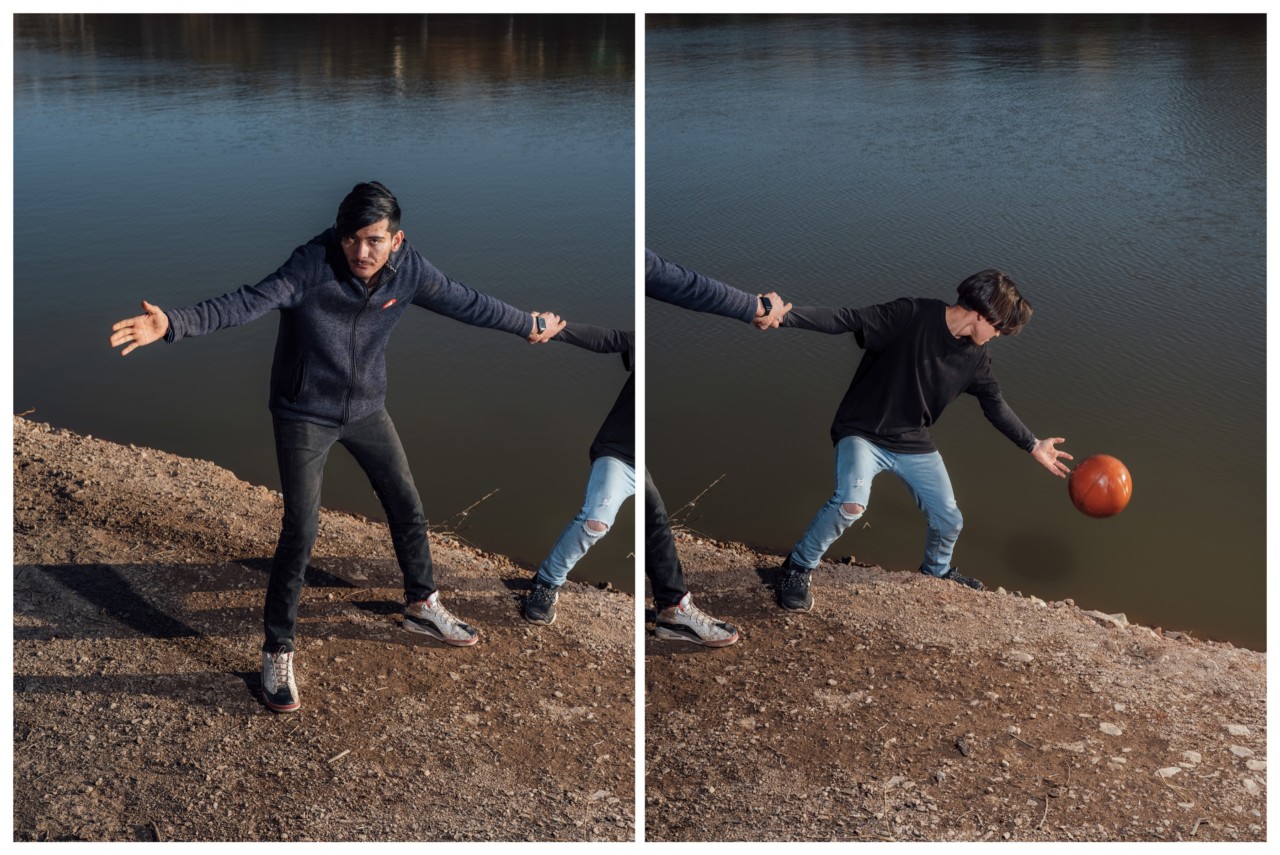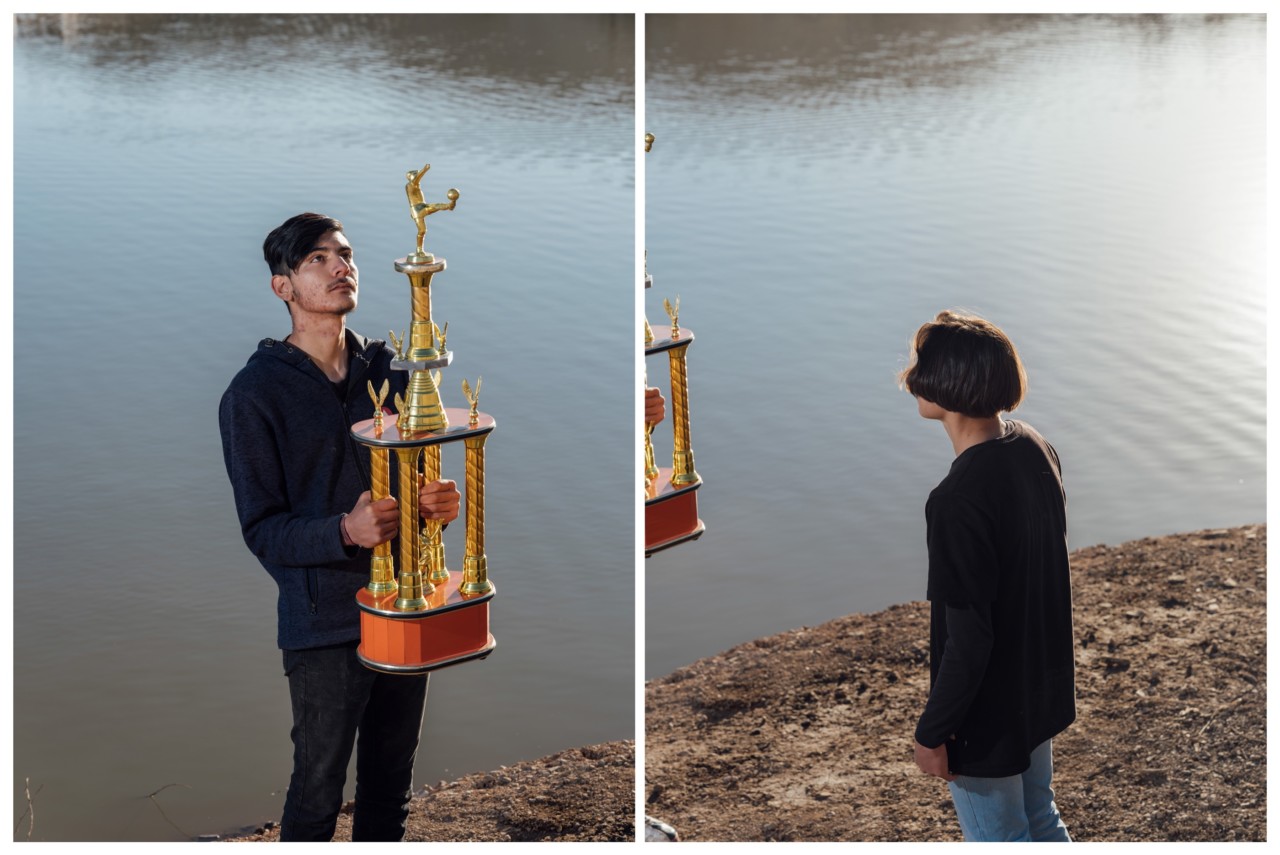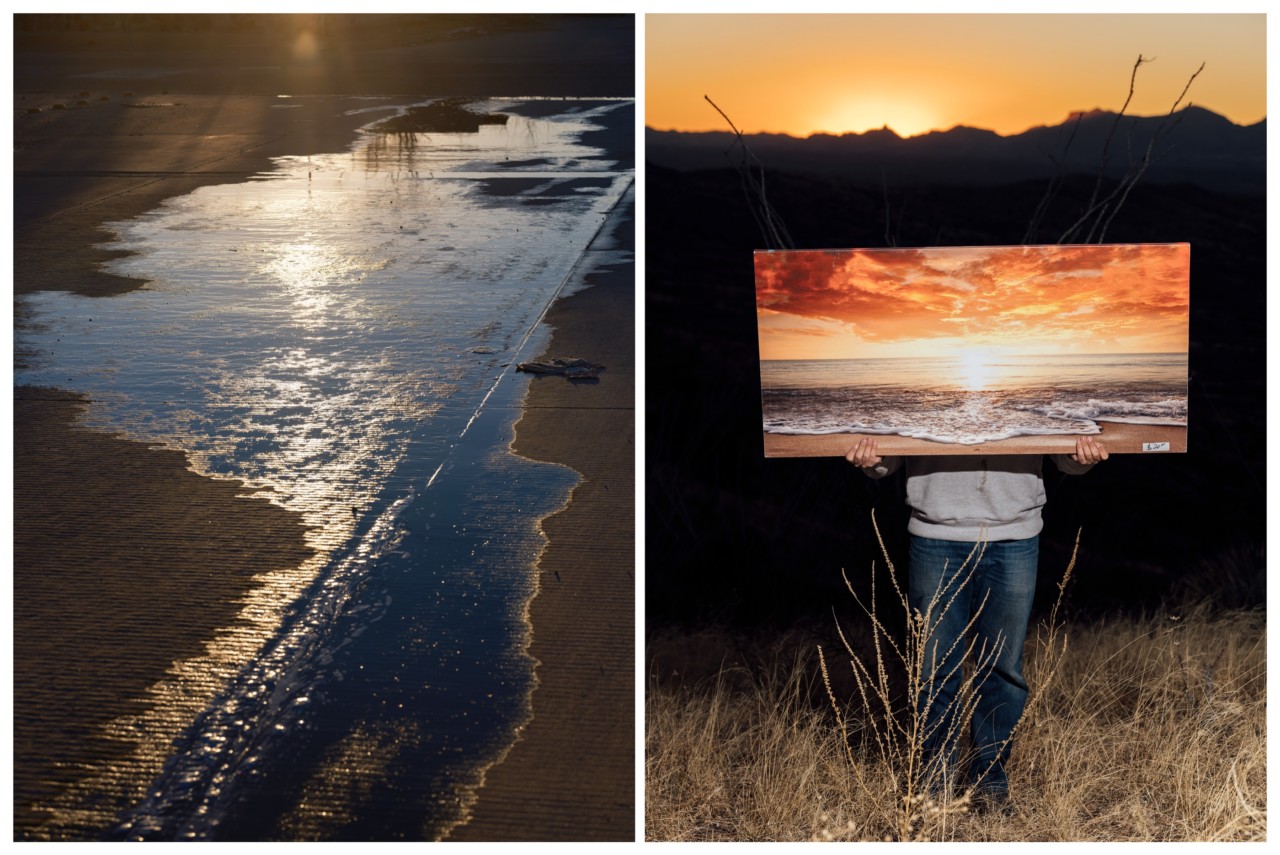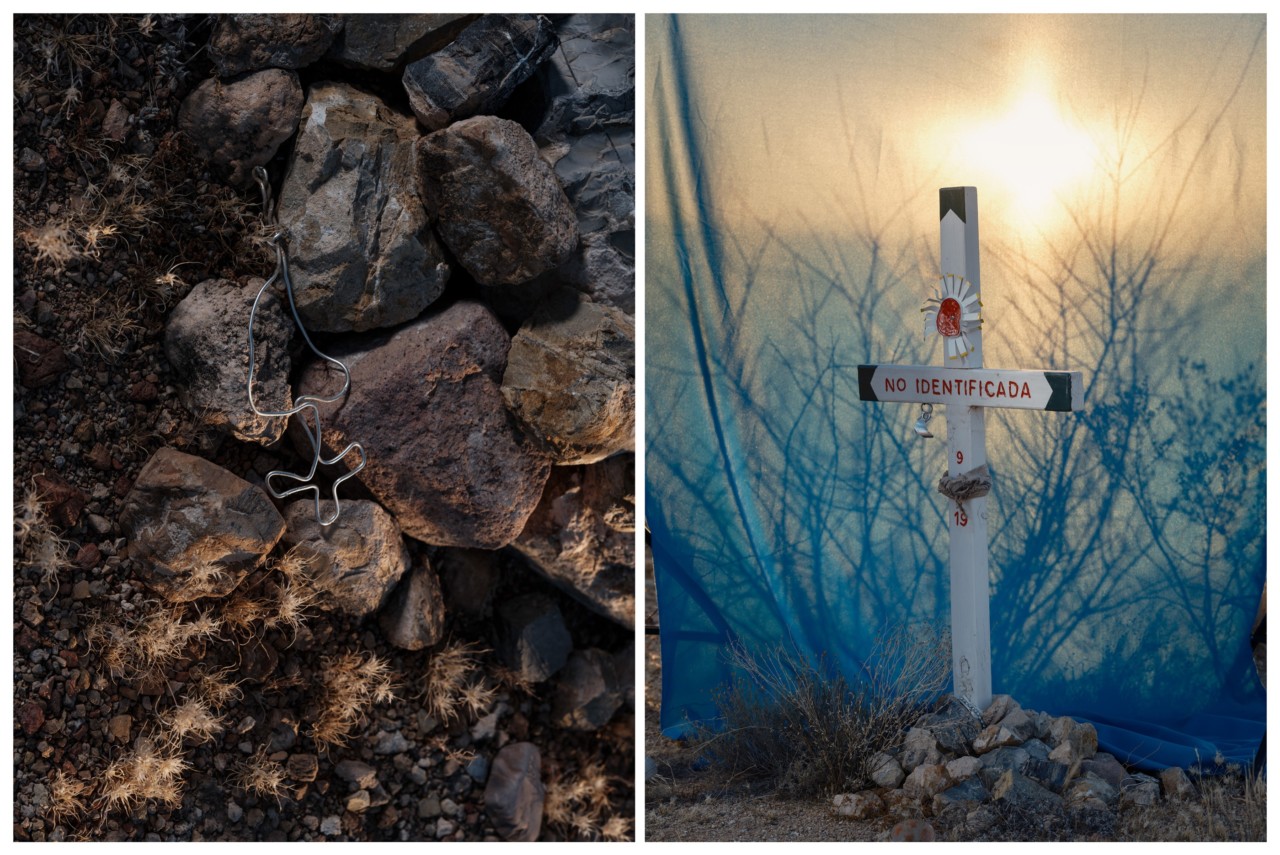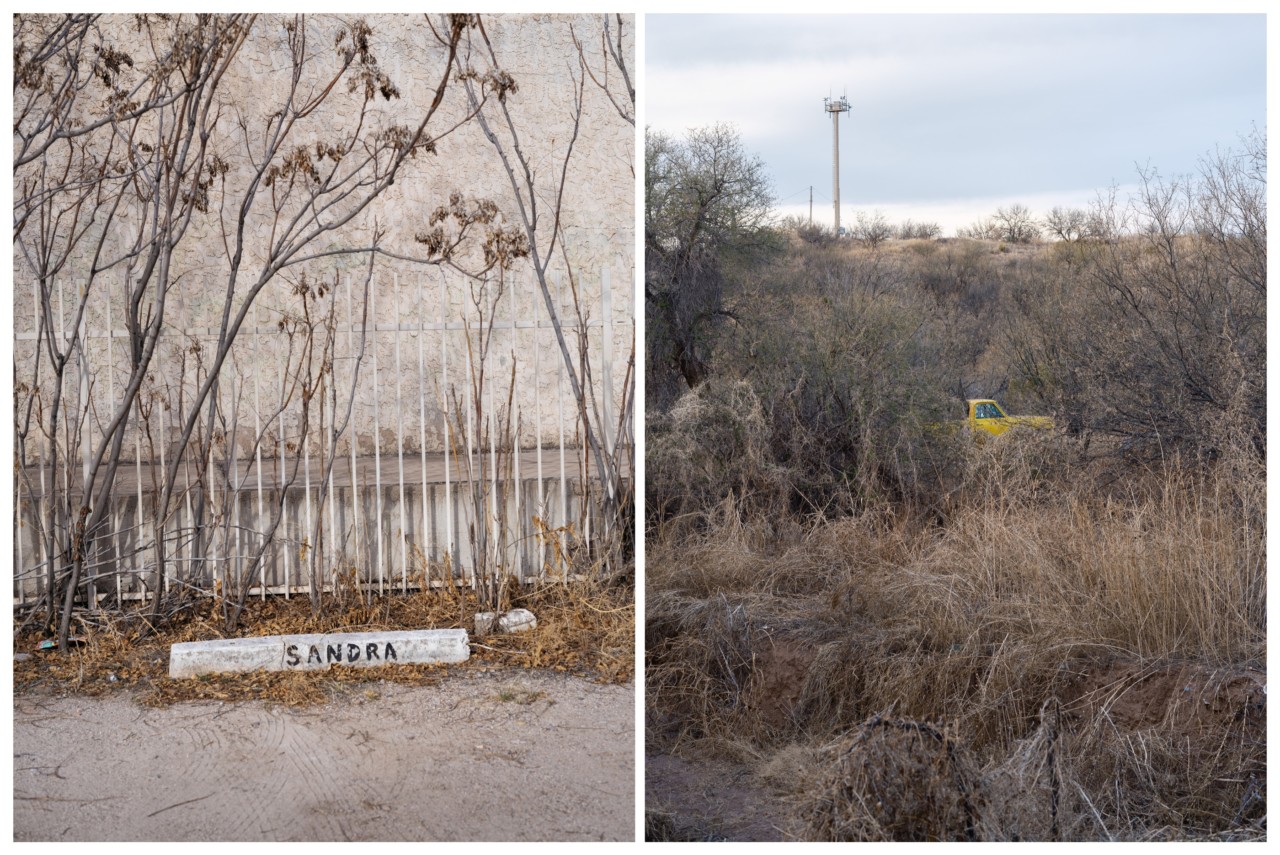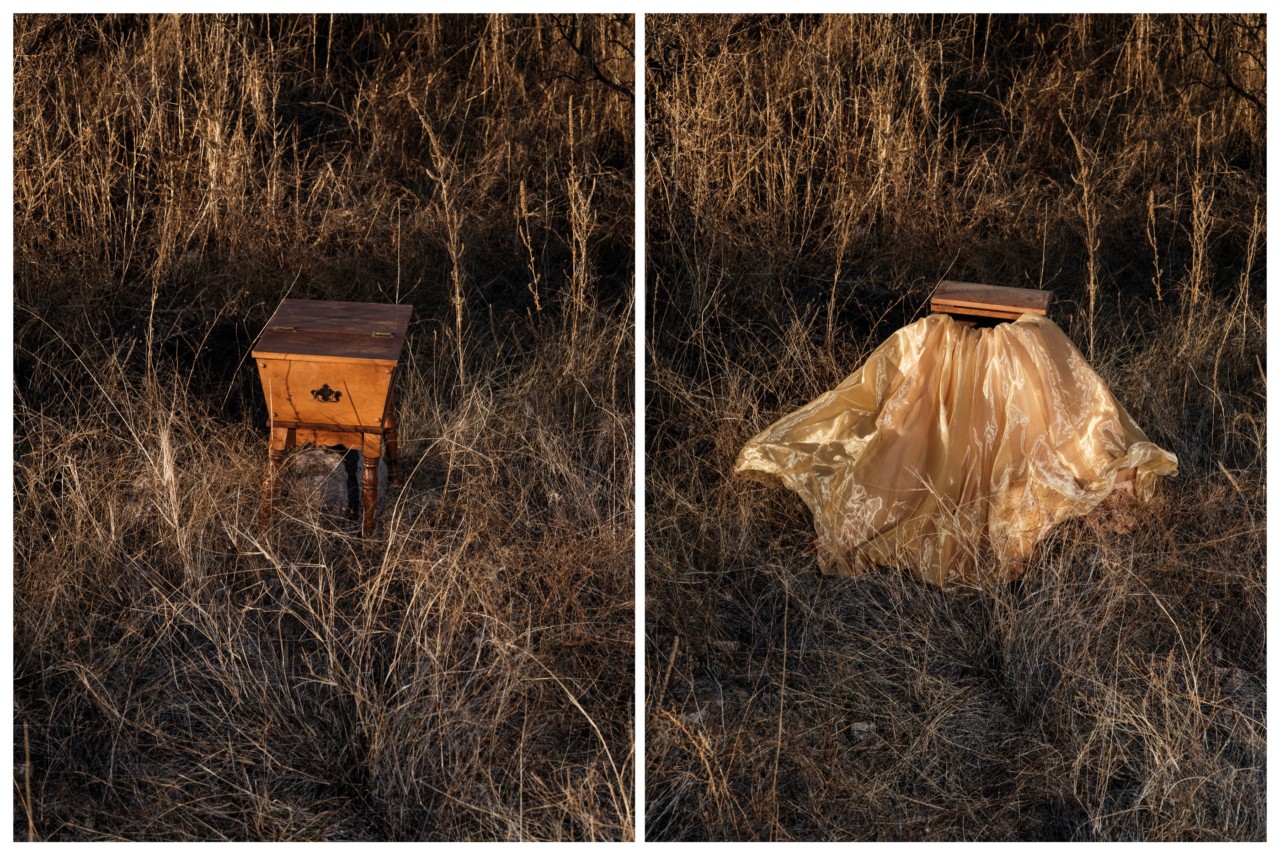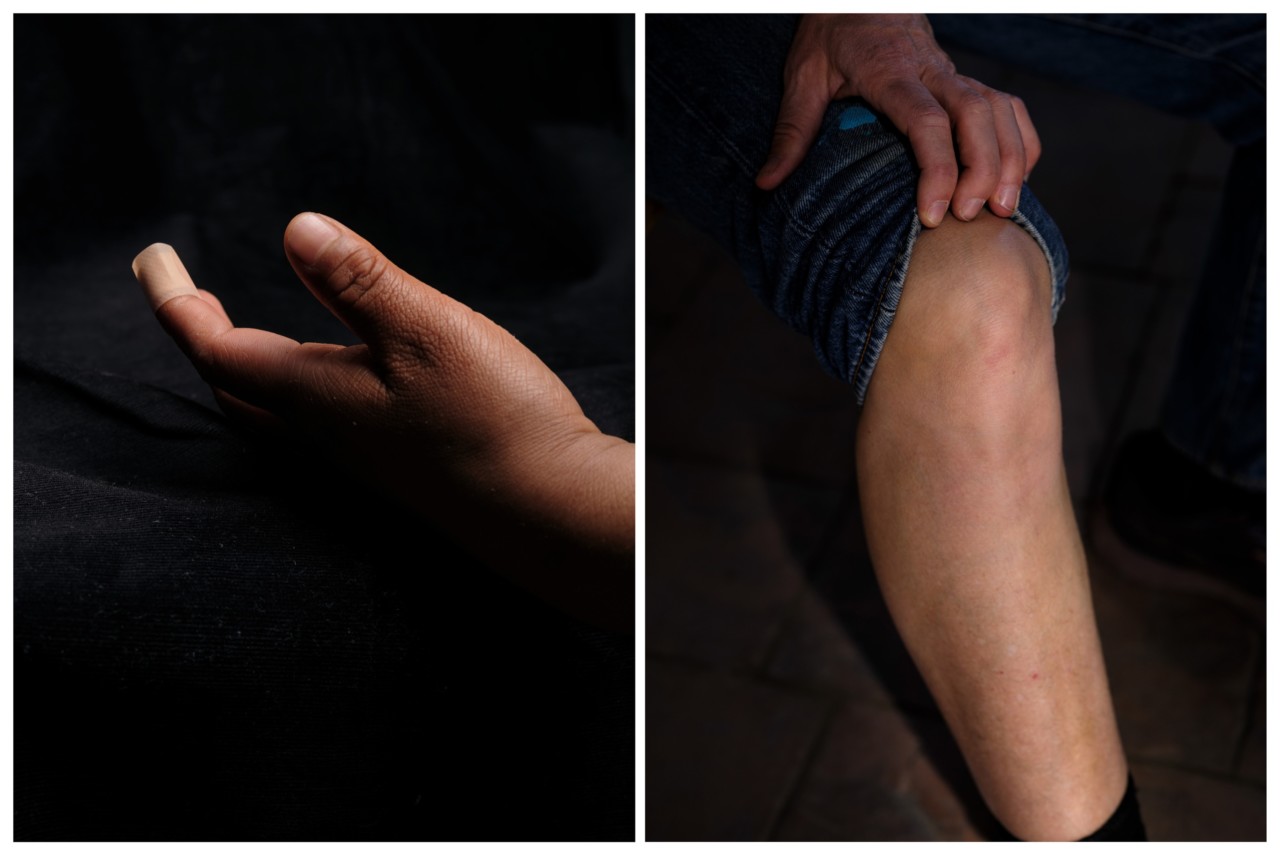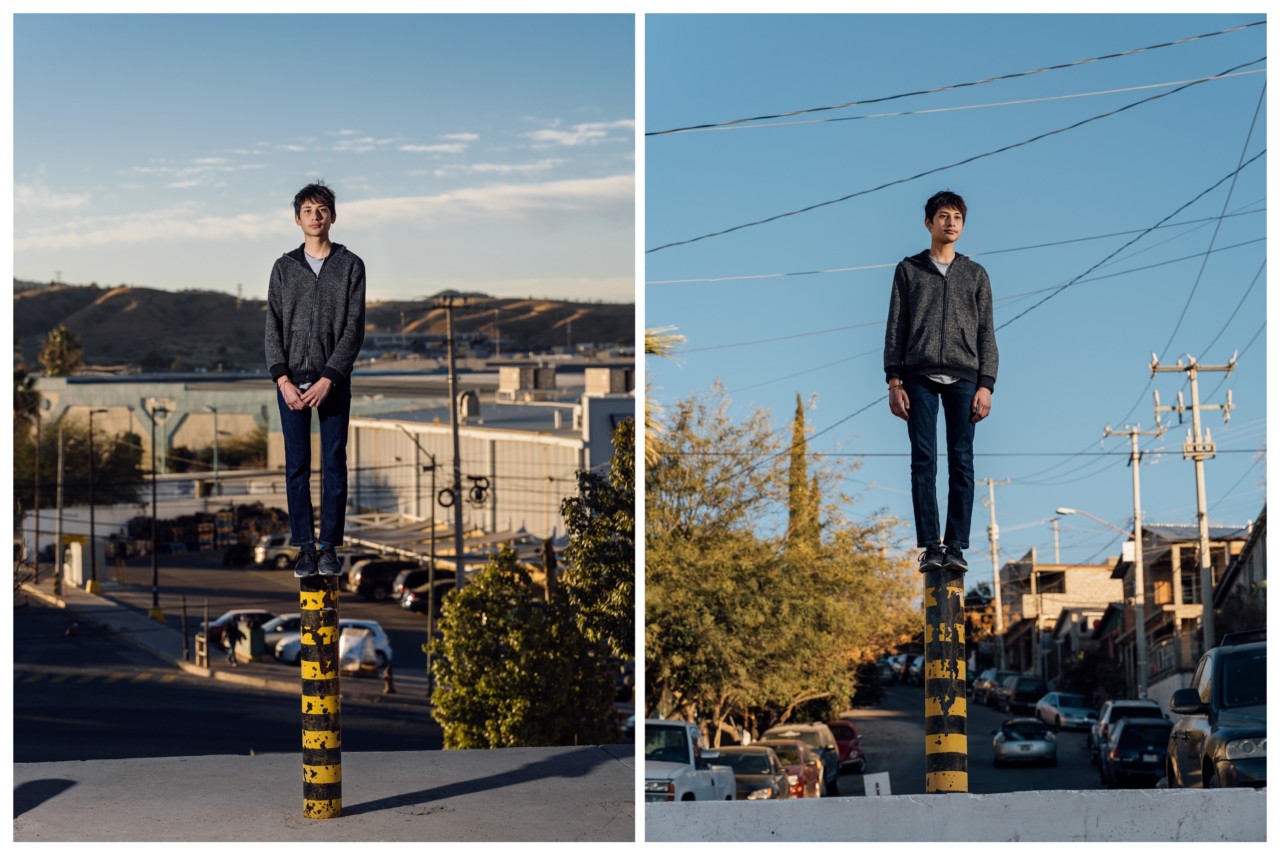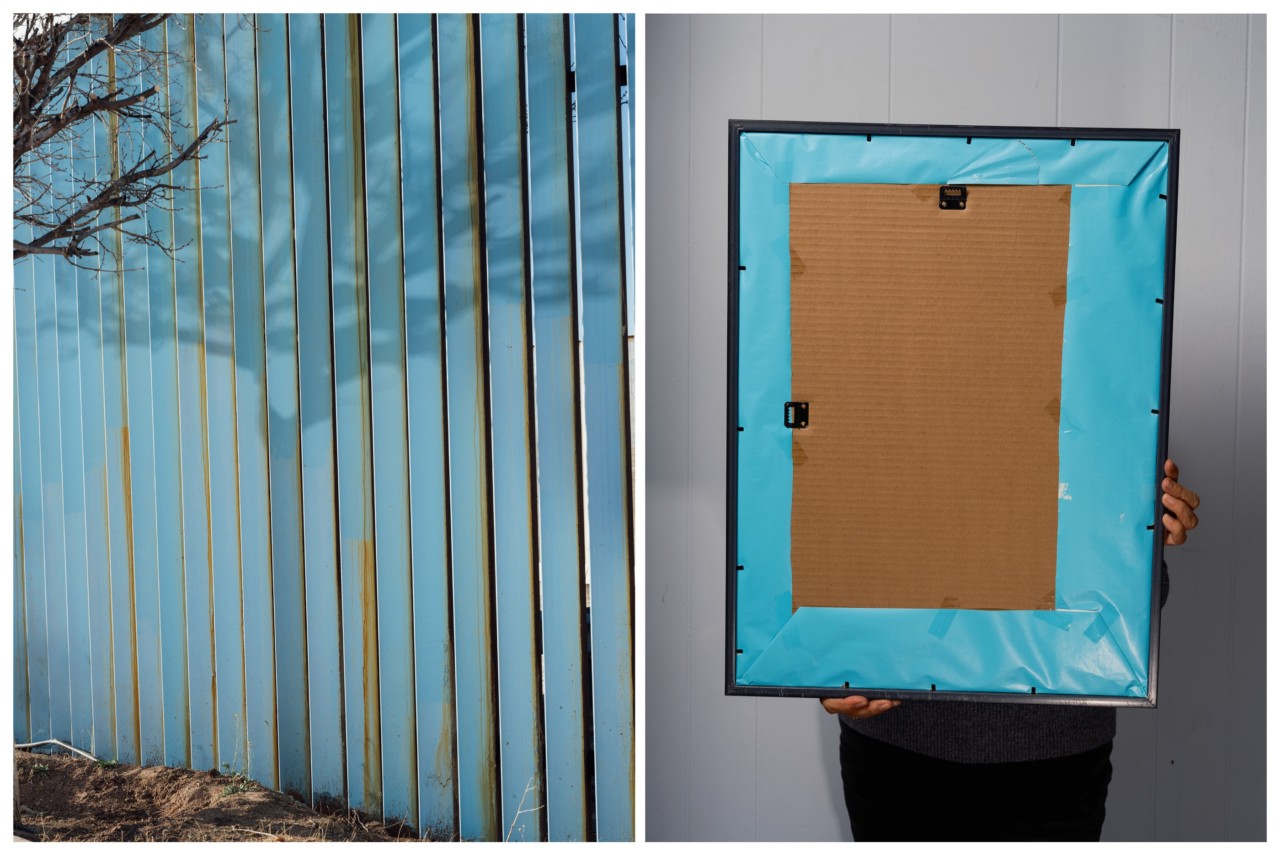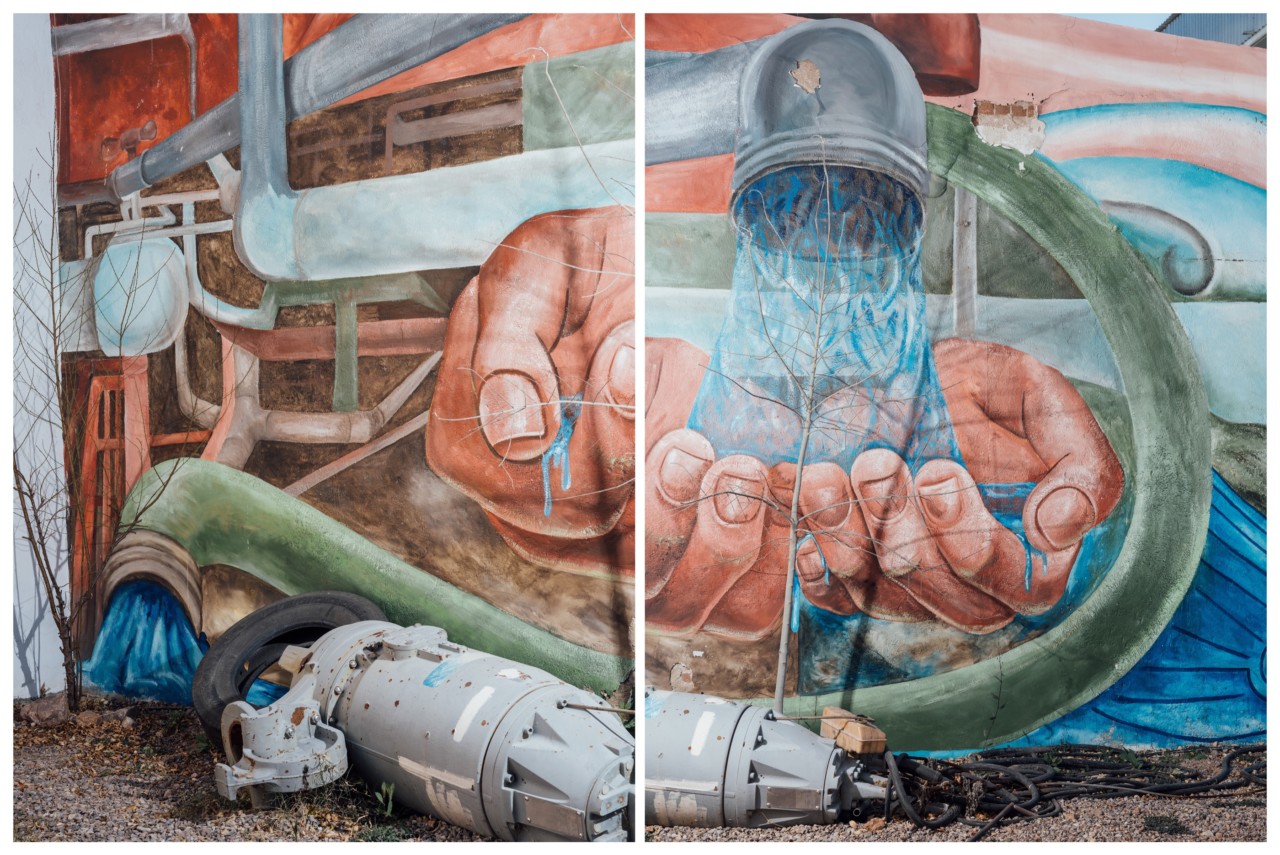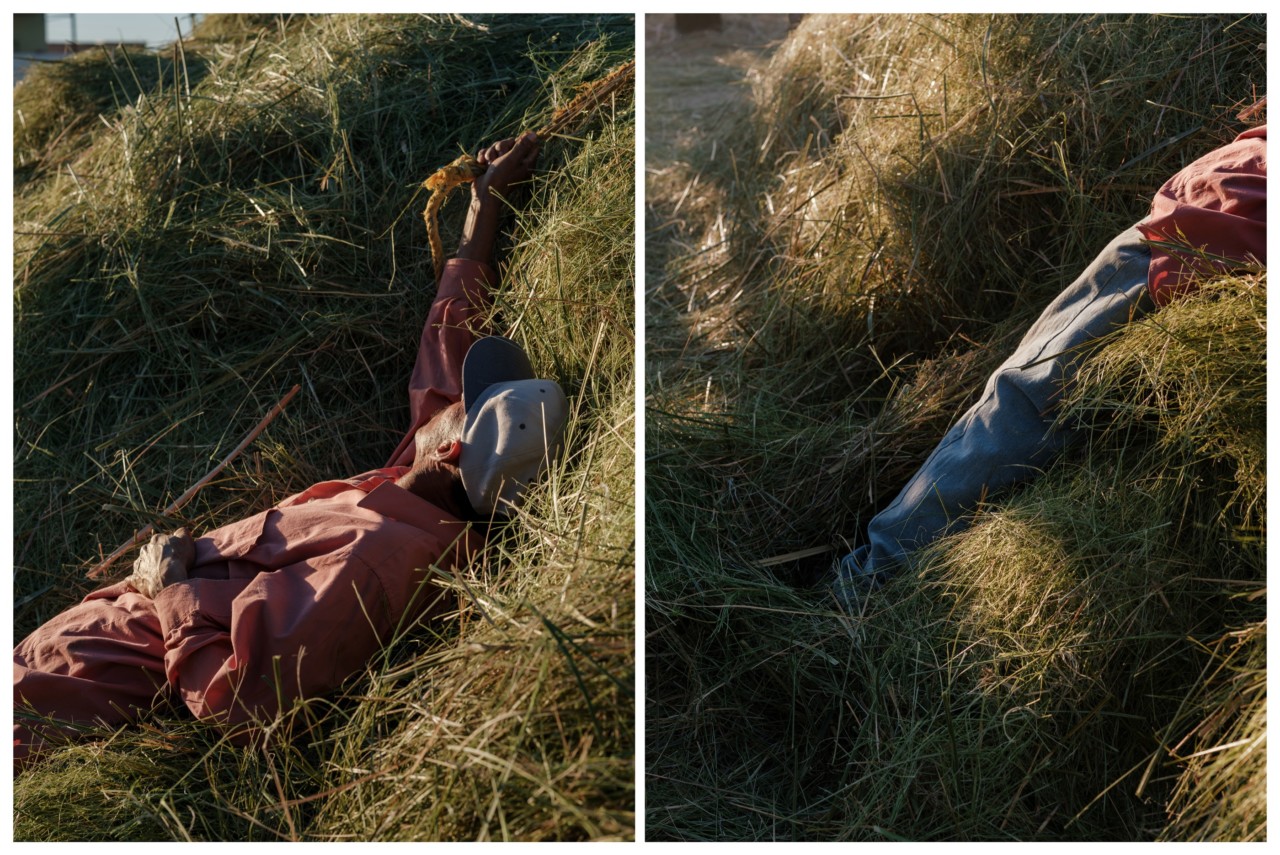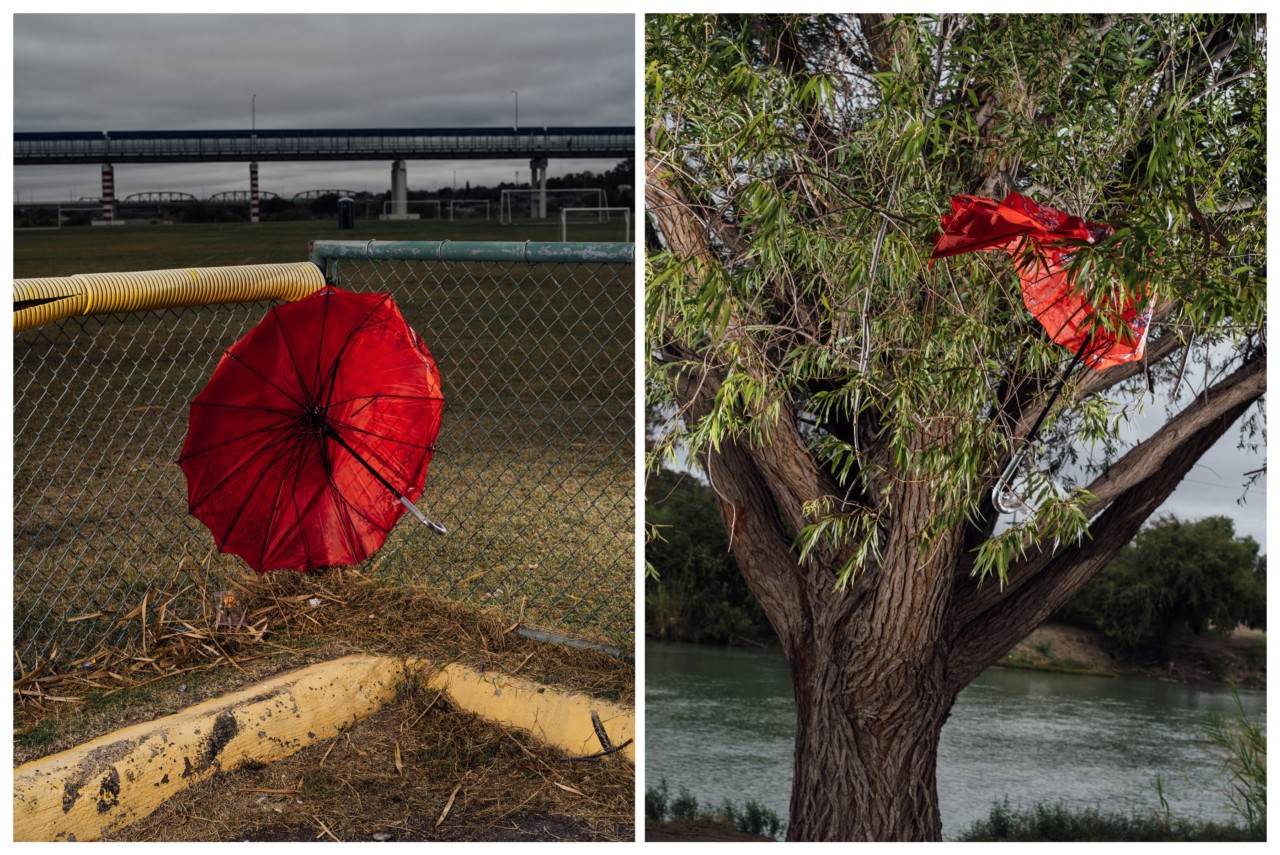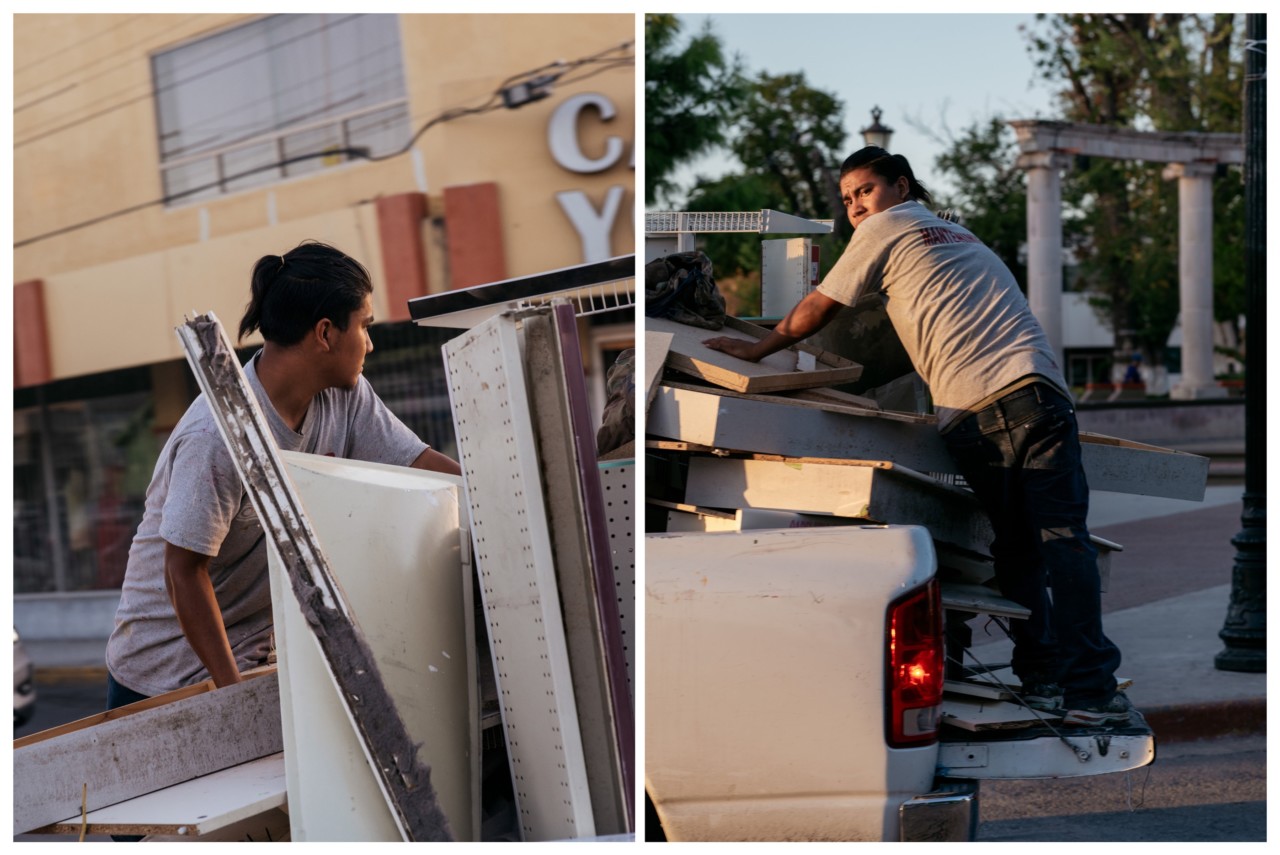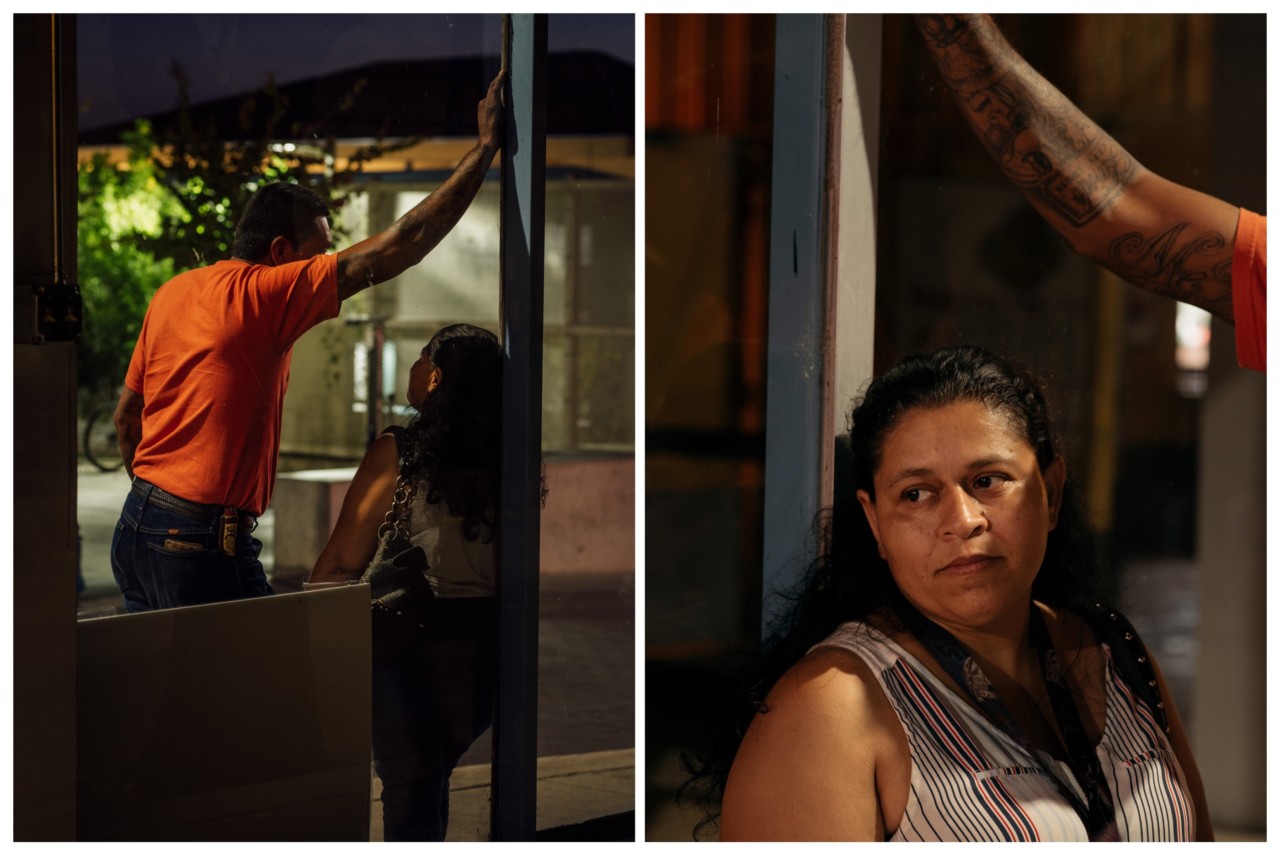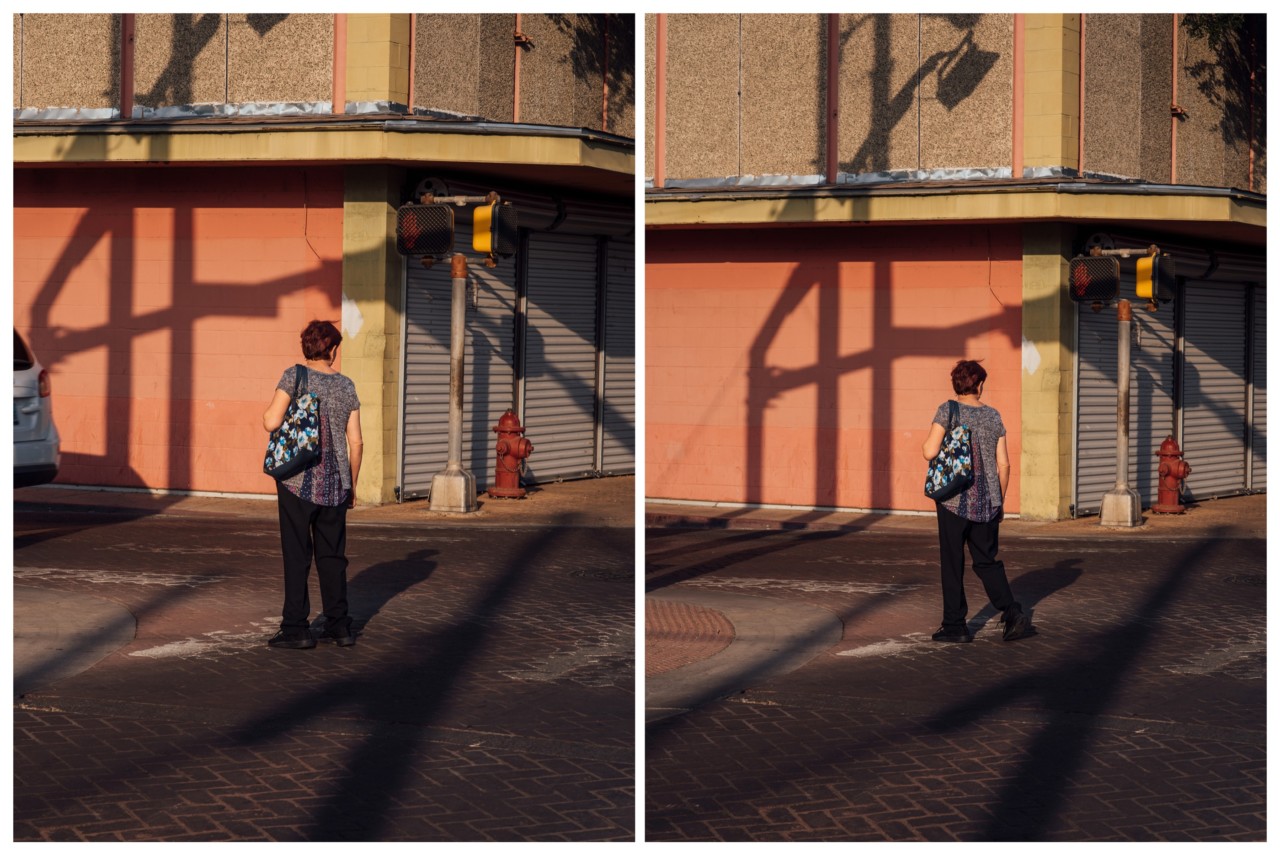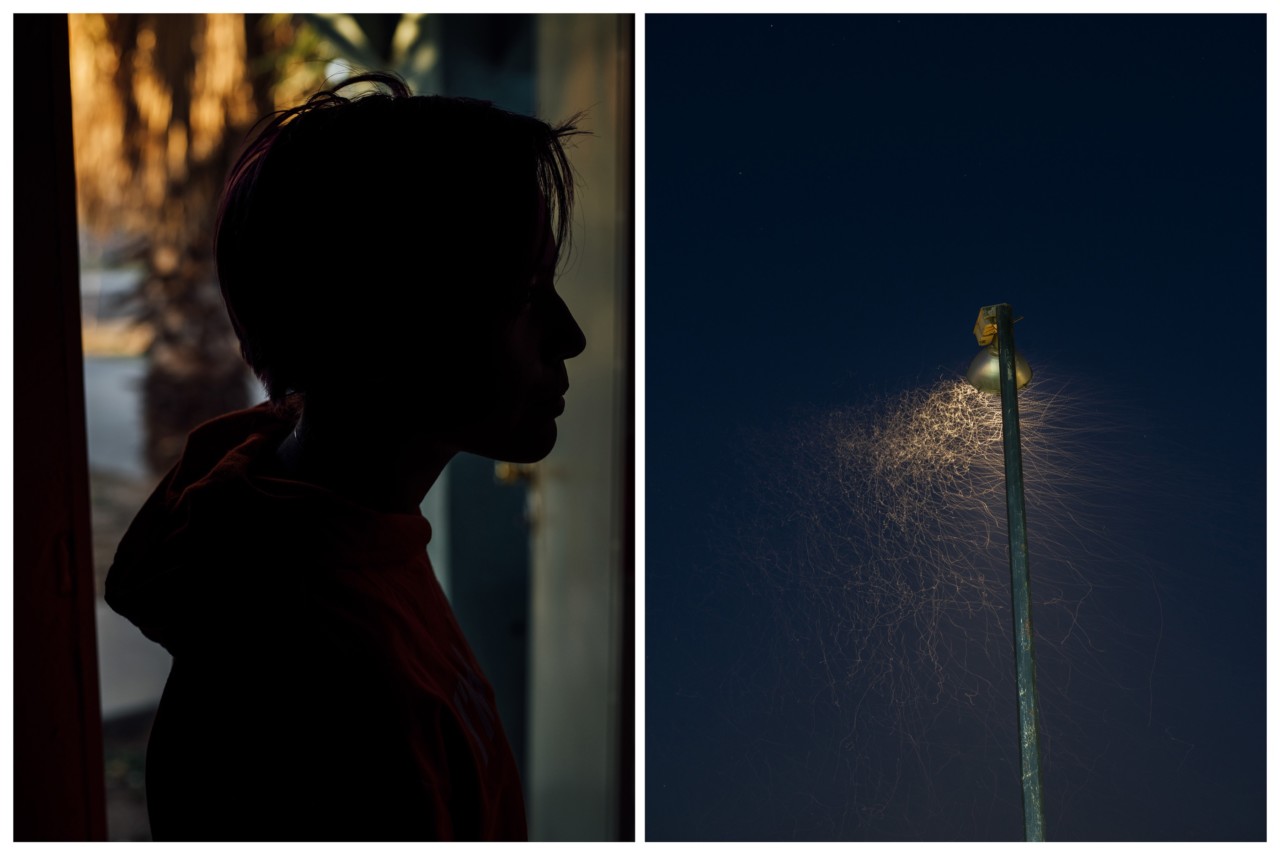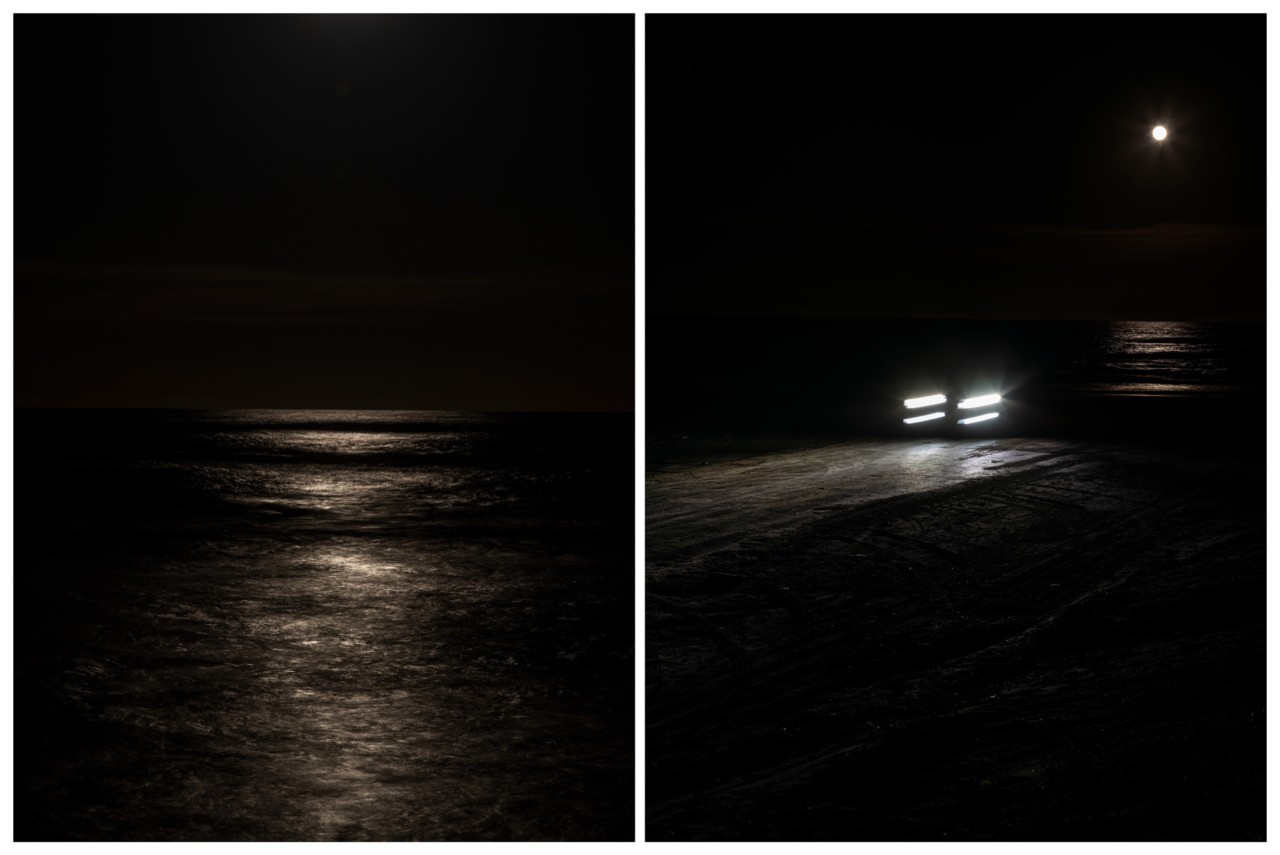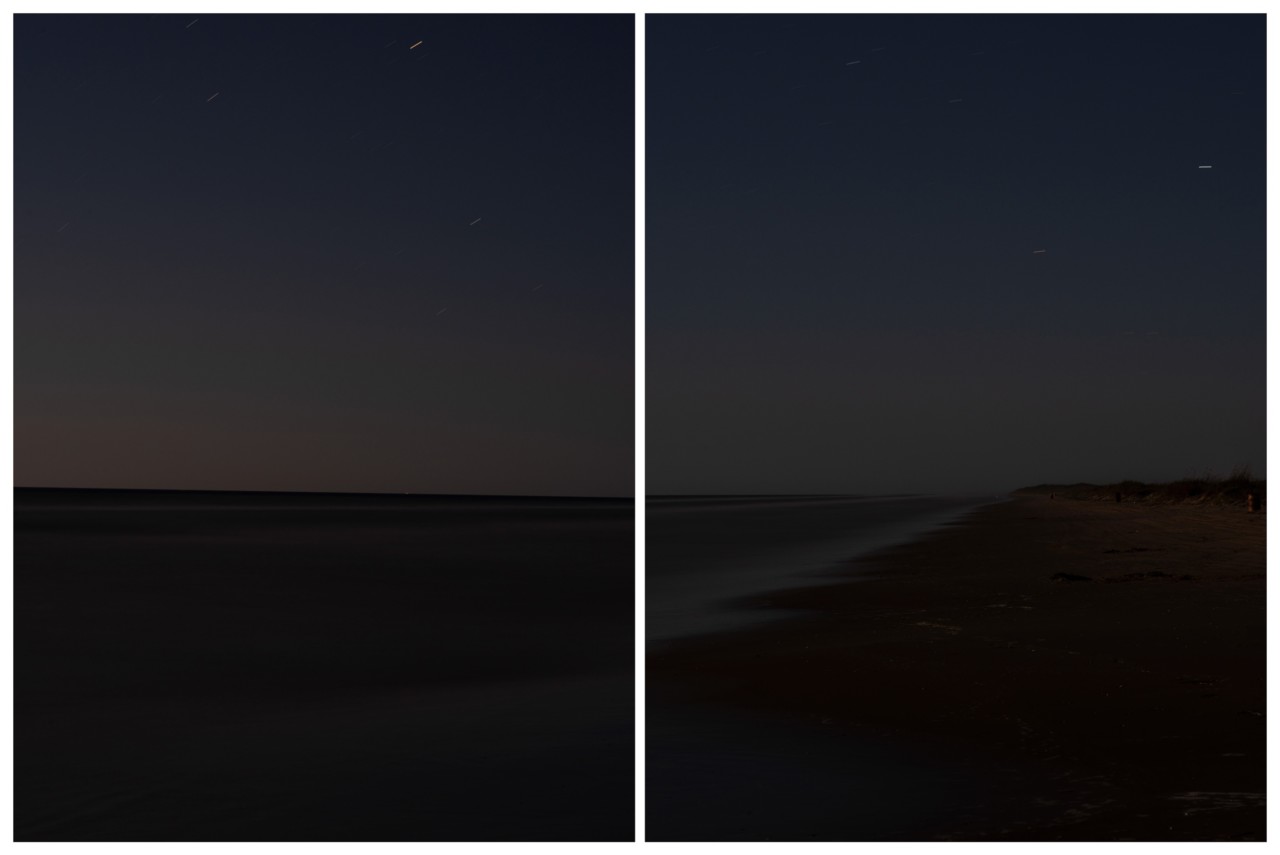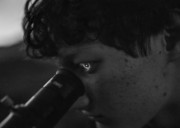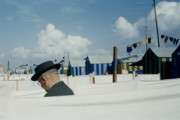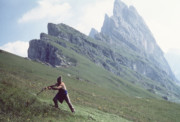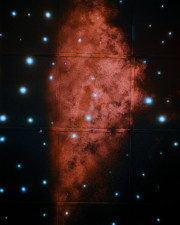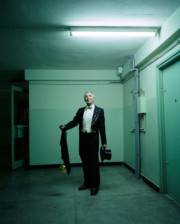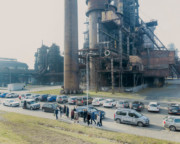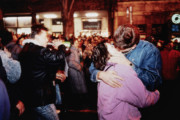Carolyn Drake and Andres Gonzalez – Ficciones: “We are drawn to the ways identity is negotiated in the borderlands”
Ficciones is a collaborative project made by Carolyn Drake and Andres Gonzalez along the US–Mexico border, commissioned in partnership between Magnum Photos and Obscura. Here the photographers talk about how they went about their creative process in working on the project.
The project Ficciones, by Carolyn Drake and Andres Gonzalez, was begun in 2018. Made on the threshold between Mexico and the US, it seeks to explore the ways identity is negotiated in these borderlands.
The latest installment of the project, made as a commission for Obscura, is newly available as a collection of Non Fungible Tokens (NFTs). Here, we share the photos from the project and an extract from an interview between Drake, Gonzalez and Obscura Journal contributor Danielle Ezzo, which can be read in full here. To learn more about the Magnum Photos and Obscura commissions, and see the list for future releases, please click here.
"What we want to do is deflate the expected result – the assumption that one side is inherently us, and the other side is inherently them, so that we find ourselves “on both shores at once”, as Anzaldua wrote"
-
Drake and Gonzalez give the following statement about their work:
“We have been partners in life and work since we met in grad school in 2003. Our family histories can be reduced to familiar stories. Andres’ extended family migrated from Mexico to California over a period of decades, settling in the San Francisco Bay. Carolyn also has roots in California – European farmers who migrated West along the Oregon trail in the 19th century.
We have both fought, and at times failed, to defy the stereotypes we fit into. And while we are repeatedly confounded by the ways our differing cultural backgrounds shape our behaviors, the next moment we are confounded by the ways we thwart them. The differences draw us together, but they are also a source of struggle, something we are constantly hashing out.
The visual pairings we are making across the US–Mexico border reflect that struggle: to find balance, to relate, and to defy the expectations of our own storyline. We make pictures together yet apart, looking at almost the same things at almost the same time. We are drawn to the ways identity is negotiated in the borderlands – people and towns and waterways that are part one and part the other, perpetually divided and crossing between. The title Ficciones is a reminder that the border itself is not a natural condition; it is an imagined concept – albeit one that occupies physical, political, and psychological space. For the Magnum x Obscura Commission we worked in small towns on both sides of the border between Nogales and Brownsville/Matamoros.”
“We are constantly trying to think of ways to deviate from the approach to photography that presents images as singular, complete visions. We started with street photography, photographing people and locations we found by happenstance, but as we learned more about each place and interacted with people, we began to imagine scenes we wanted to stage and create from the surroundings.
While working on the project we are constantly pitching each other ideas for shoots. The ideas usually get rejected by the other person, but then if we keep advocating for it, it sometimes gets approved. It’s a constant negotiation.”
Read on for the extracted interview between Drake, Gonzalez and Obscura magazine.
DE: The work is presented as pairings: each contributing an image, or a point of view. In some cases, there’s a simple shift in parallax like in #34, one boy holding a trophy and another looking at the boy holding the trophy. You are a pair of eyes that together complete the scene. Other times, the connection lies in the untold story between two images like in #51, the gas station at night paired with the portrait of a couple’s feet intertwined. Tell us about when it’s important to work as a pair, and when it’s better to look elsewhere?
CD/AG: For the most part, we both shoot the scenes – we really want to see what two different perspectives look like, and to find an alternative to one-sided viewing. But you are right, once we begin editing, we will sometimes combine different scenes. It’s actually not always clear where a scene begins and ends.
DE: In your statement, you speak about your different yet similar cultural backgrounds with recent histories in California, but where the immigrant’s experience plays a role in your shared experience; can you speak to the ways in which you defy and also grapple with how those stories have influenced each of you?
CD/AG: We each see our parents in ourselves, as we all do, and there are cultural histories that influence those identities. Honestly, it can be difficult to talk or write about those differences specifically. It feels reductive. Carolyn’s family arrived in California from the east and Andres’ family arrived from the south and each family evolved in its own way according to culture and heritage and chance. After 20 years, we are participants and observers of both stories, and that is something we both feel lucky to experience, and at times push against.
DE: With that in mind, what significance do the towns of Nogales and Brownsville-Matamoros hold?
CD/AG: The overall project extends along the border from the Pacific Ocean to the Gulf of Mexico. In 2018-19 we worked in Chihuahua and Texas. On this Obscura trip, we shifted into Sonora and Arizona. Next, we will go to Baja and California. Nogales and Brownsville-Matarmoros don’t have any extra significance – they simply mark the east and west points of where the images in this collection were made.
DE: When I first saw this project I thought of Jorge Luis Borges, the author and poet, who wrote a book by the same title. He uses the labyrinth as a recurring motif in his writing and I can’t help but think of it when looking at this project. It seems as if each diptych is its own story, but there’s an interconnectedness, like a labyrinth of possible stories. Does that resonate with your intention for the project?
CD/AG: Yes, we borrowed Borges’ title Ficciones and often turn to his writing for the way he folds time and narrative. We also look at authors like Gloria Anzaldua, and the poetry of Lorna Dee Cervantes. Anzaldua for example writes from a queer, feminist, Chicana perspective on ideas around borderland theory and double consciousness, which led us to think much more about psychic intersections rather than physical boundaries. Of course, pairing two images next to each other brings the border to mind. But what we want to do is deflate the expected result – the assumption that one side is inherently us, and the other side is inherently them, so that we find ourselves “on both shores at once”, as Anzaldua wrote. We hope that the two views alongside each can expand the sense of perspective beyond just the two. Things are always more complex than we can see.
DE: I’m curious about each of your individual approaches to making an image. Can you walk me through what makes a compelling image? What considerations are you thinking about?
CD/AG: One of us leans toward looking at things straight-on while the other is drawn to obliqueness. It’s been good for both of us to be pulled a bit in the other person’s direction. We are always thinking about the place we are in and the stories people tell us and how we can create imagery that feels rooted in our experience and interactions there. While we resist cliche, we also know we are bound by it. Visually, we try to consider a lot of things at once – objects, actions, gestures, shadows, angles that make you do a double take.
DE: Are there any rules or structure for the collaboration?
CD/AG: The only preset rules we started with for this trip were that we would spend time in Douglas/Agua Prieta and in Nogales/Nogales and that we would create diptychs inspired by the people and locations where we spent time.
We are also constantly trying to think of ways to deviate from the approach to photography that presents images as singular, complete visions. We started with street photography, photographing people and locations we found by happenstance, but as we learned more about each place and interacted with people, we began to imagine scenes we wanted to stage and create from the surroundings.
While working on the project we are constantly pitching each other ideas for shoots. The ideas usually get rejected by the other person, but then if we keep advocating for it, it sometimes gets approved. It’s a constant negotiation.


